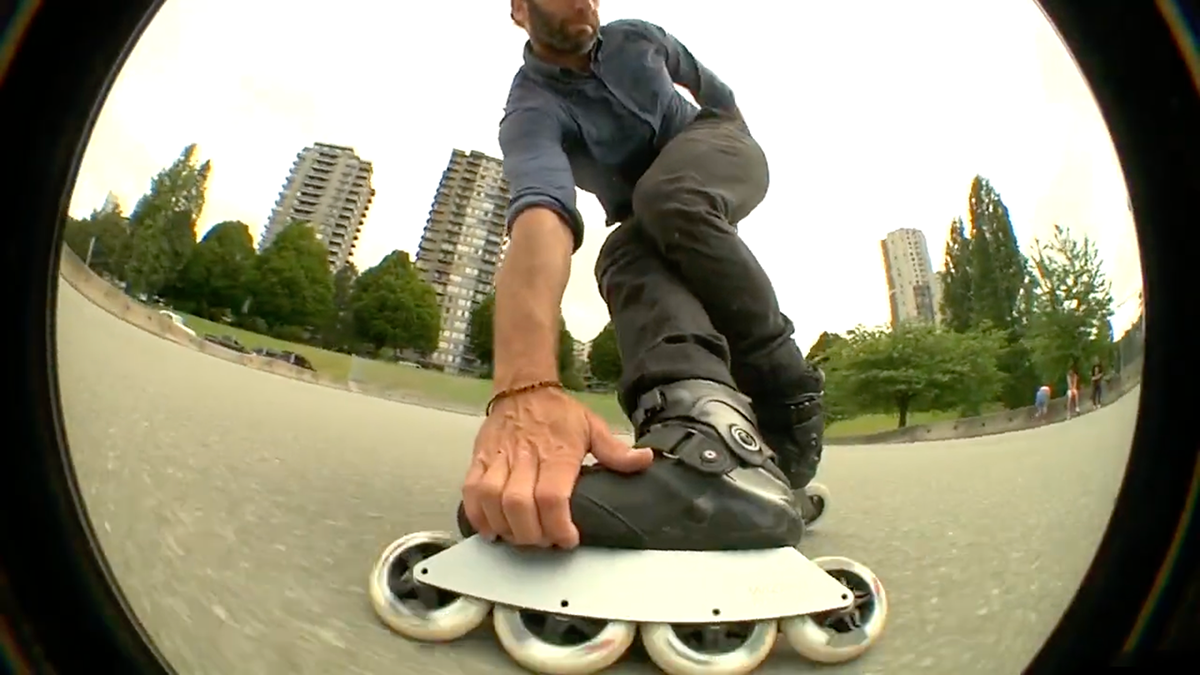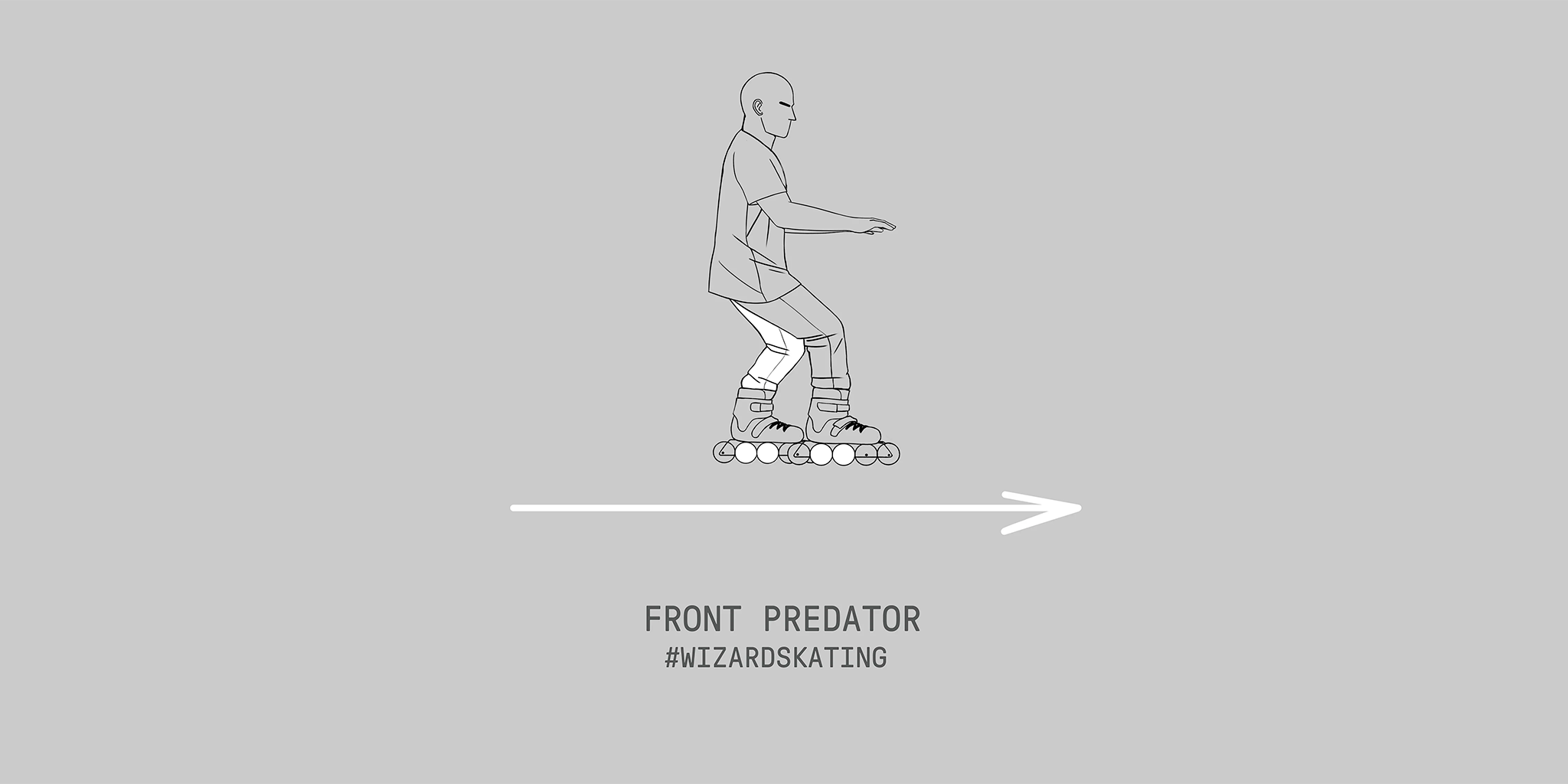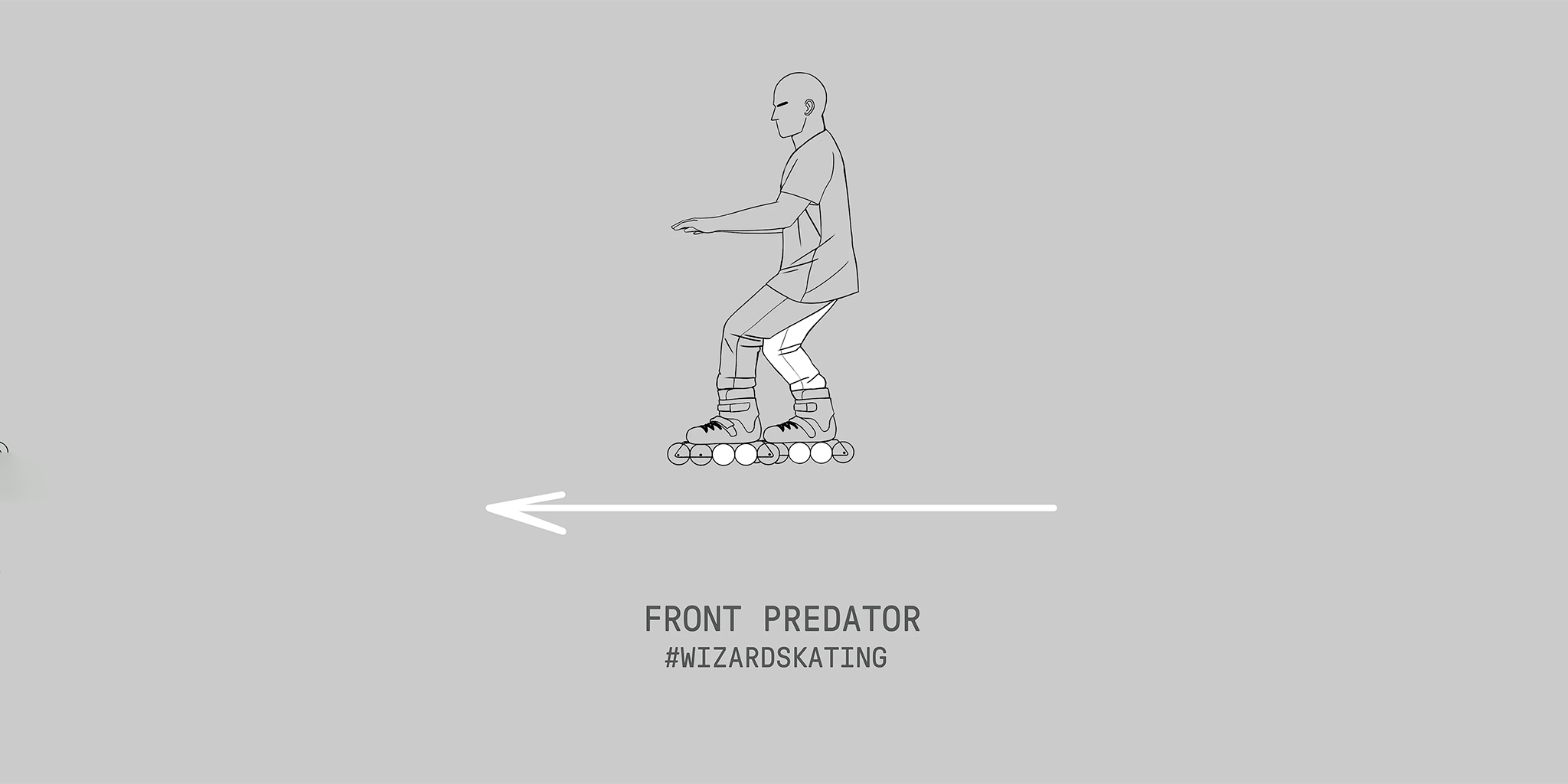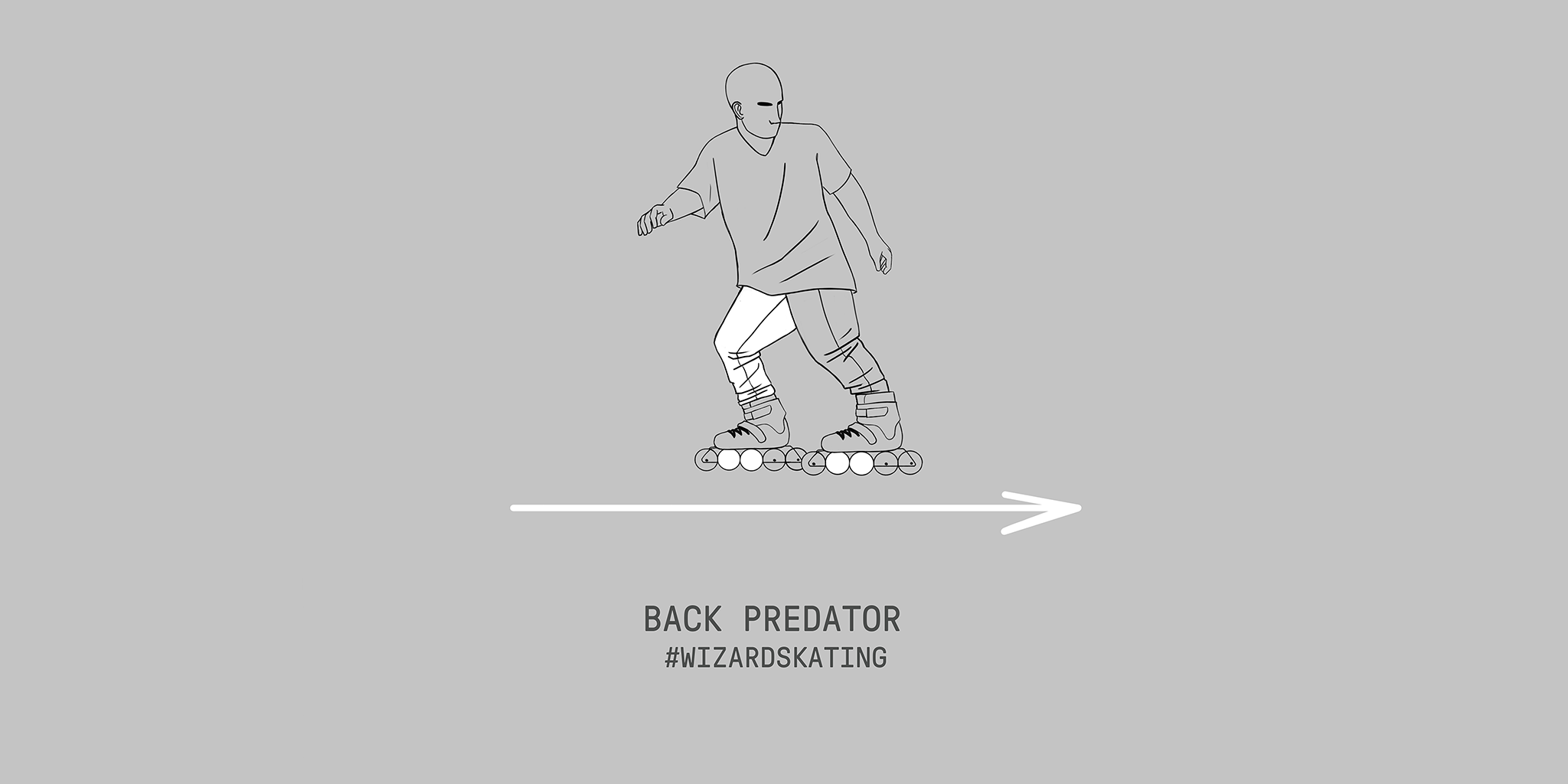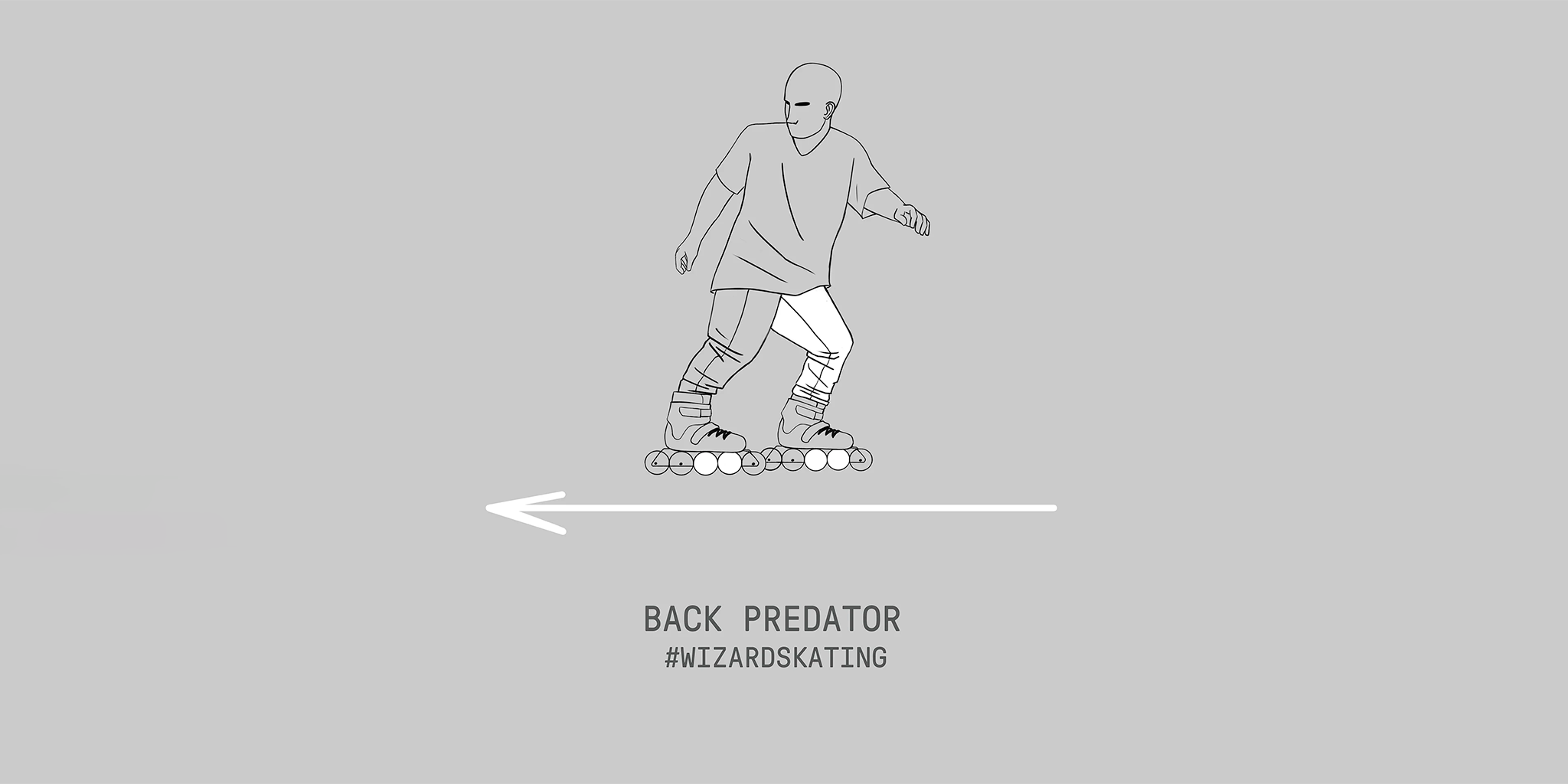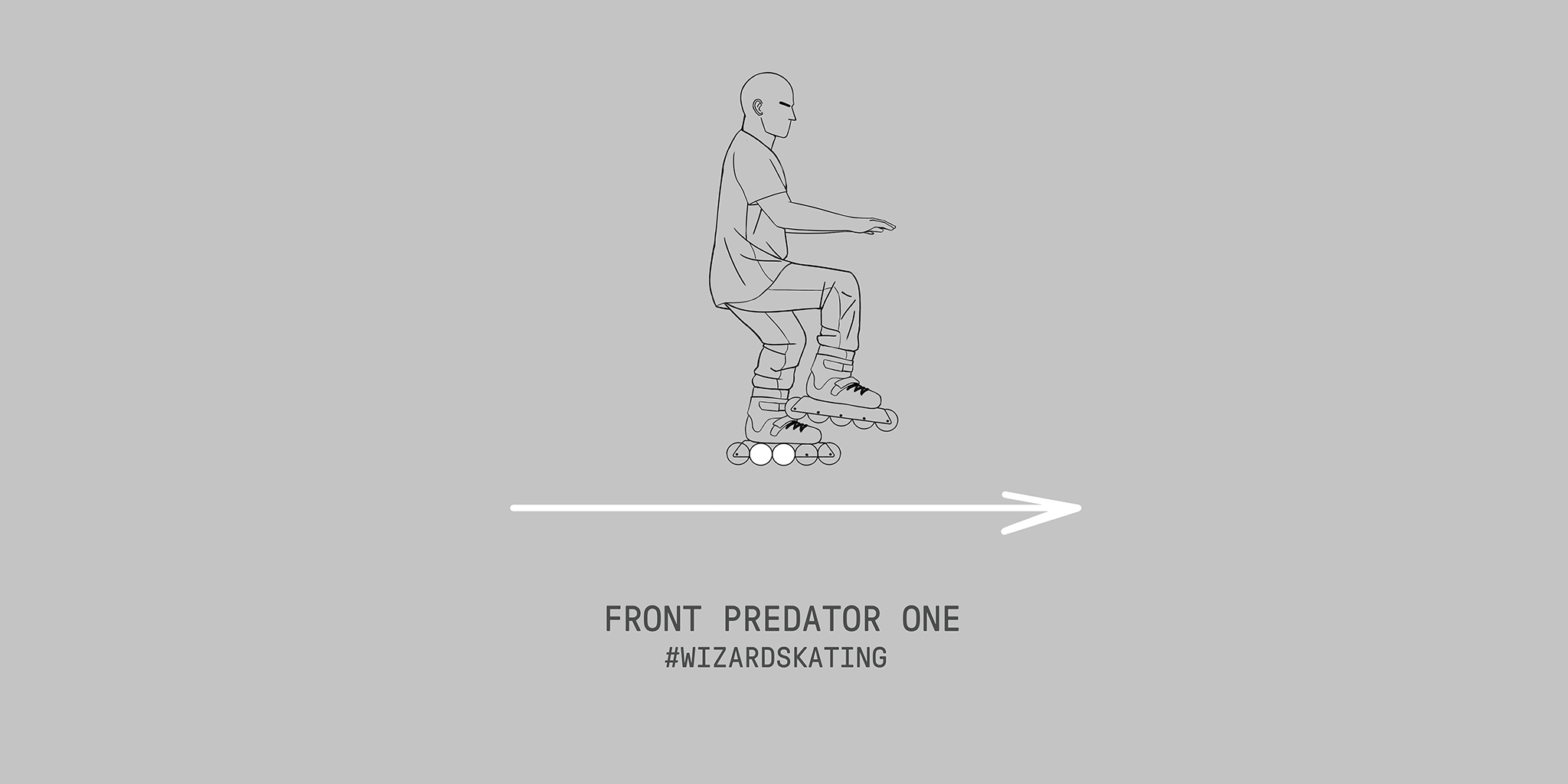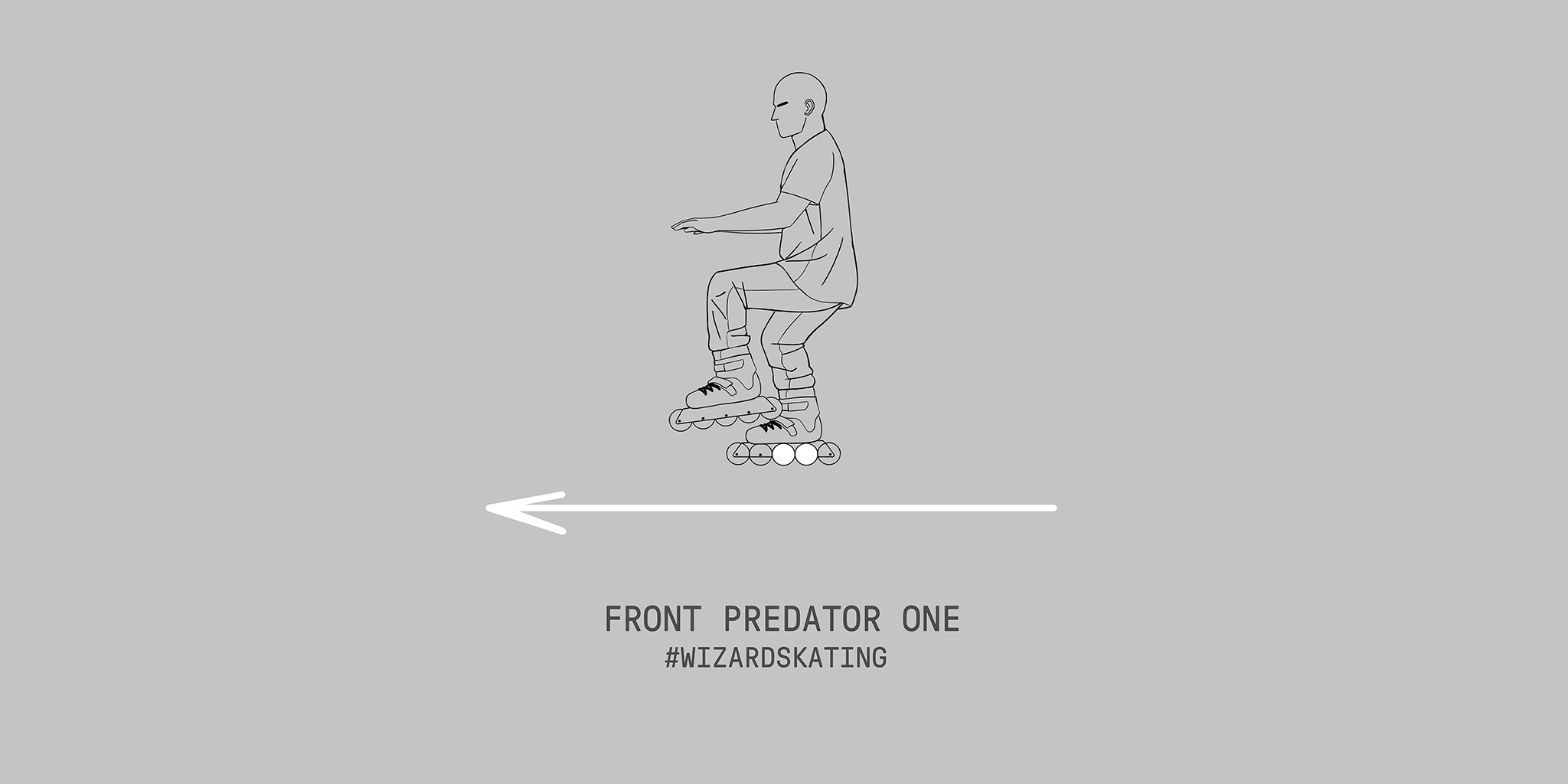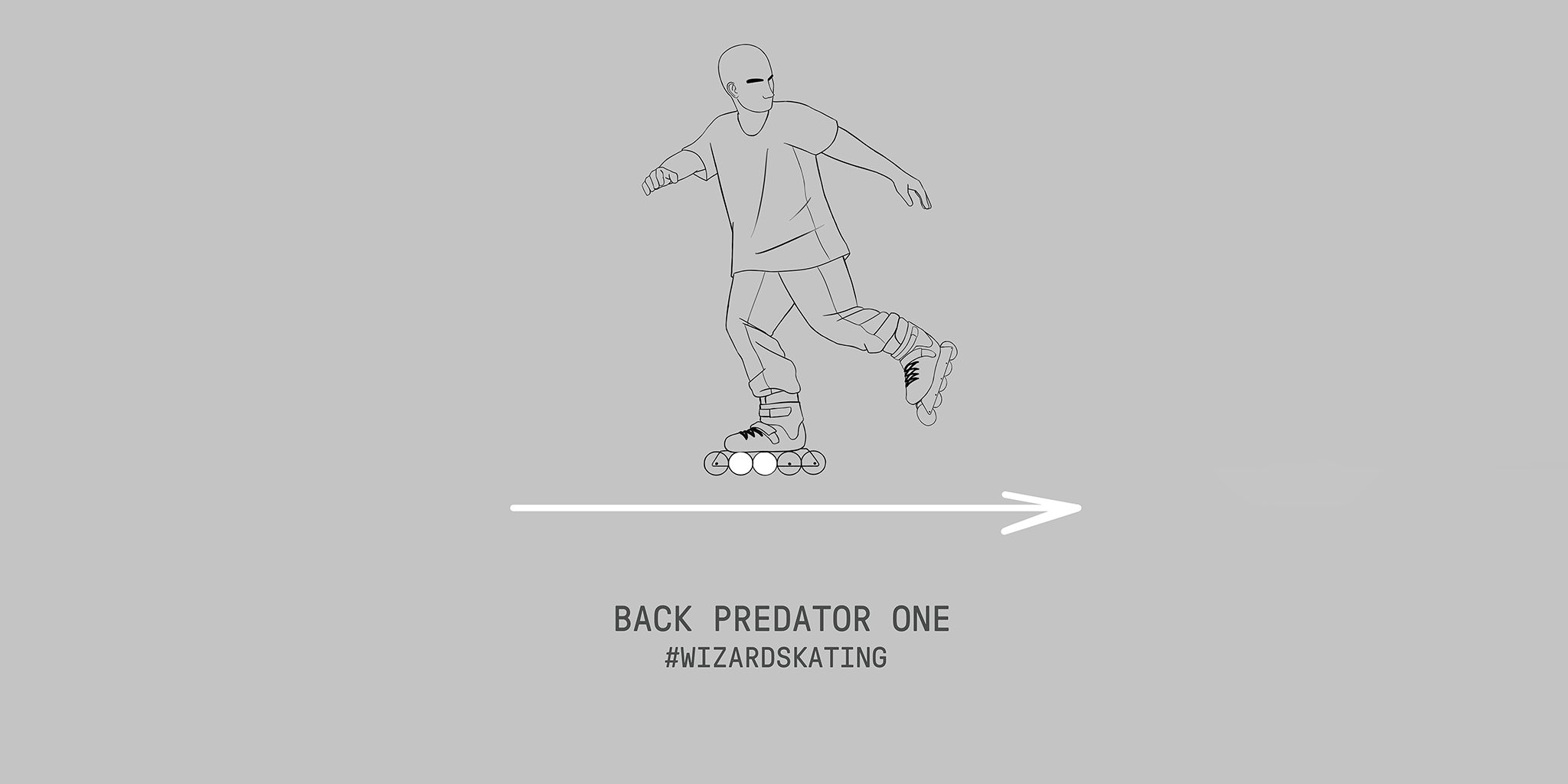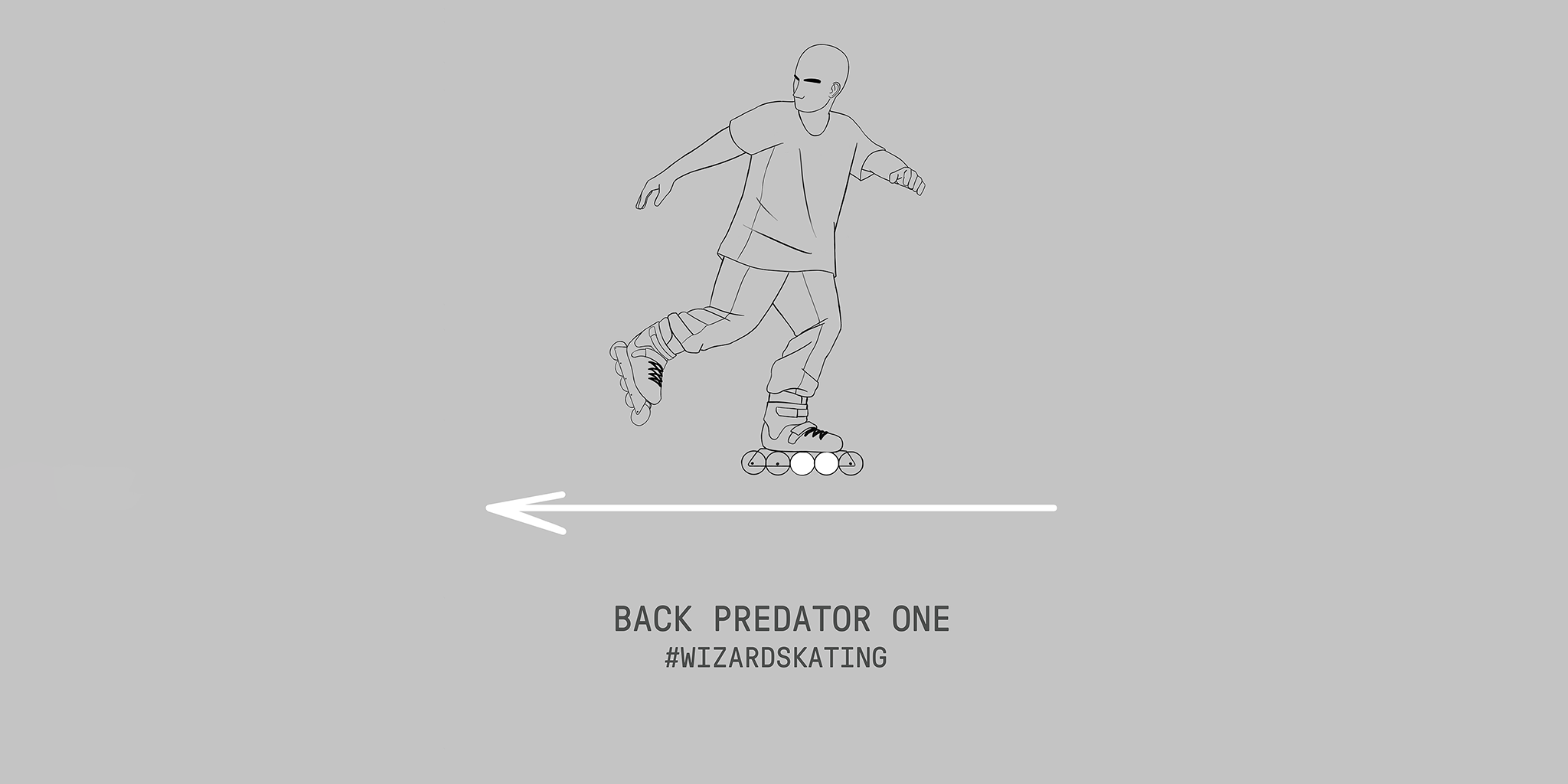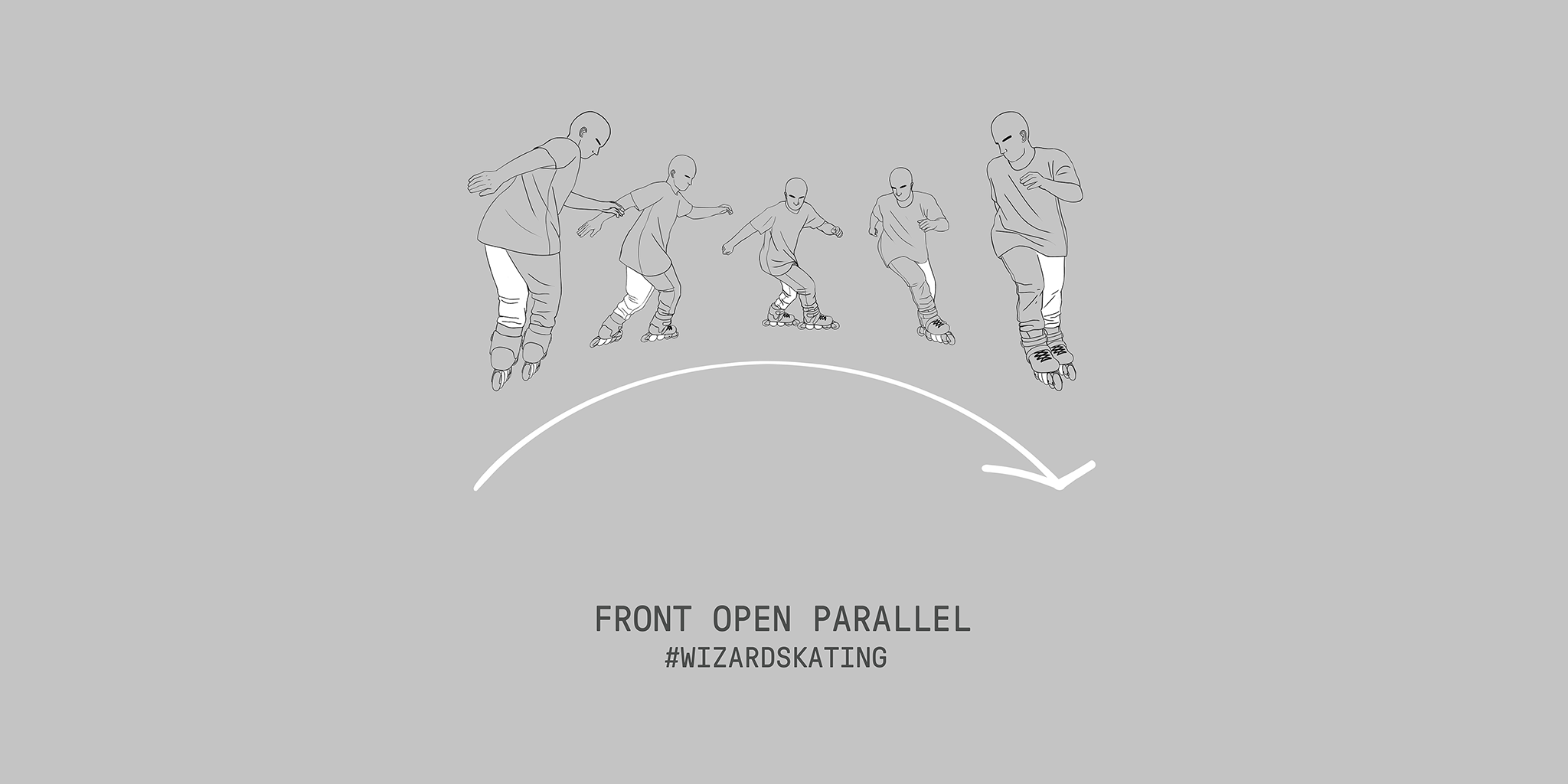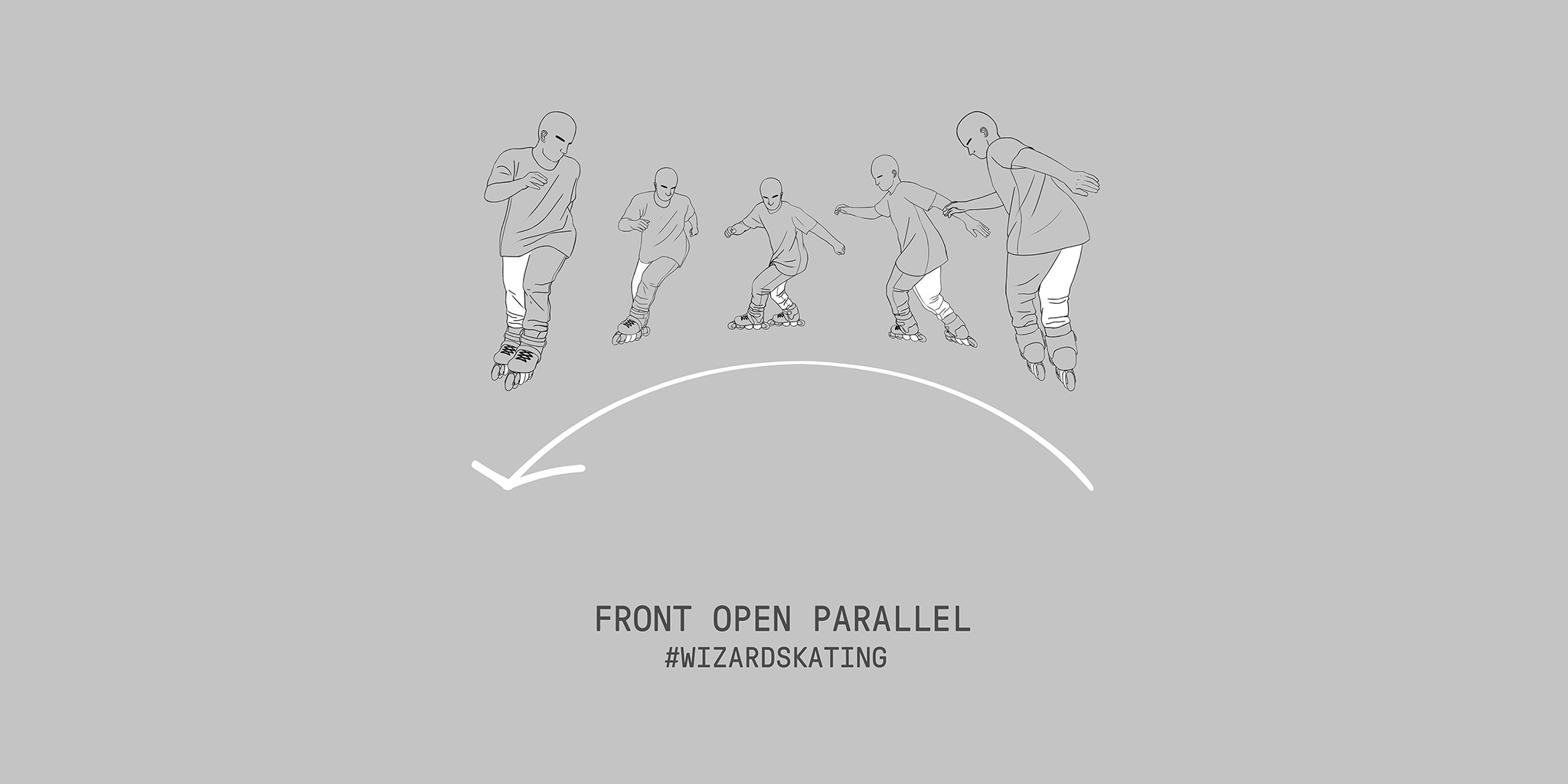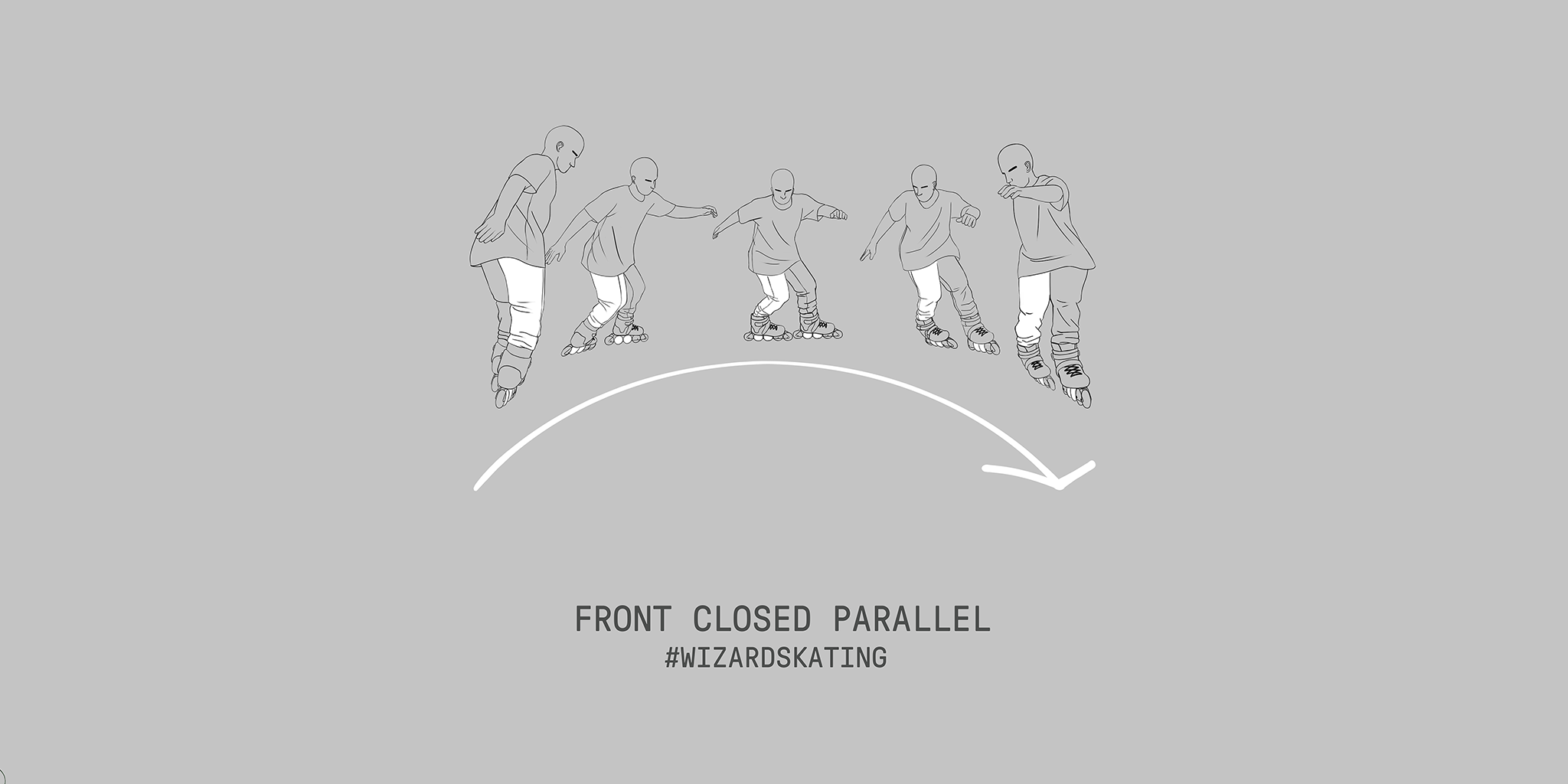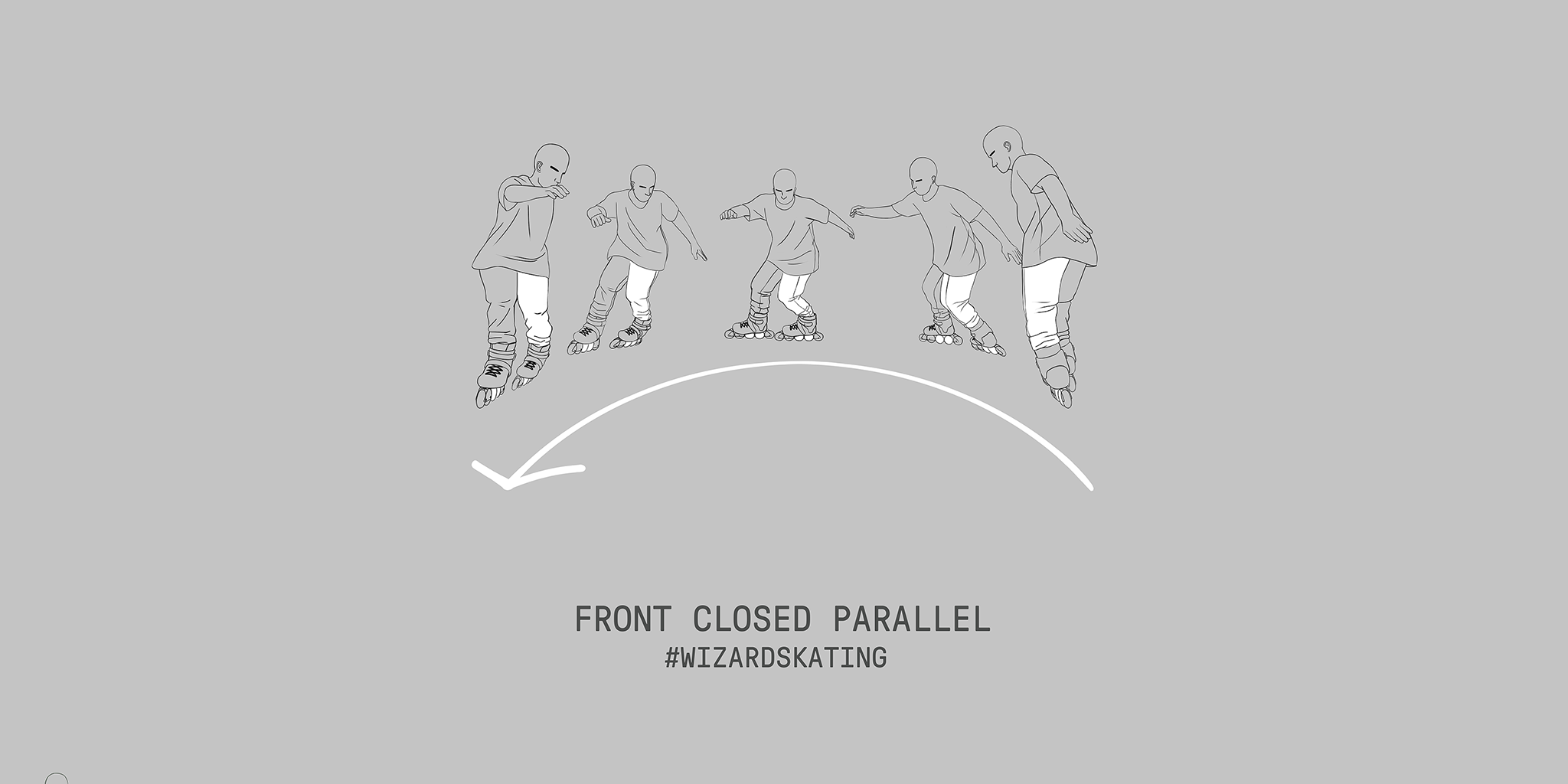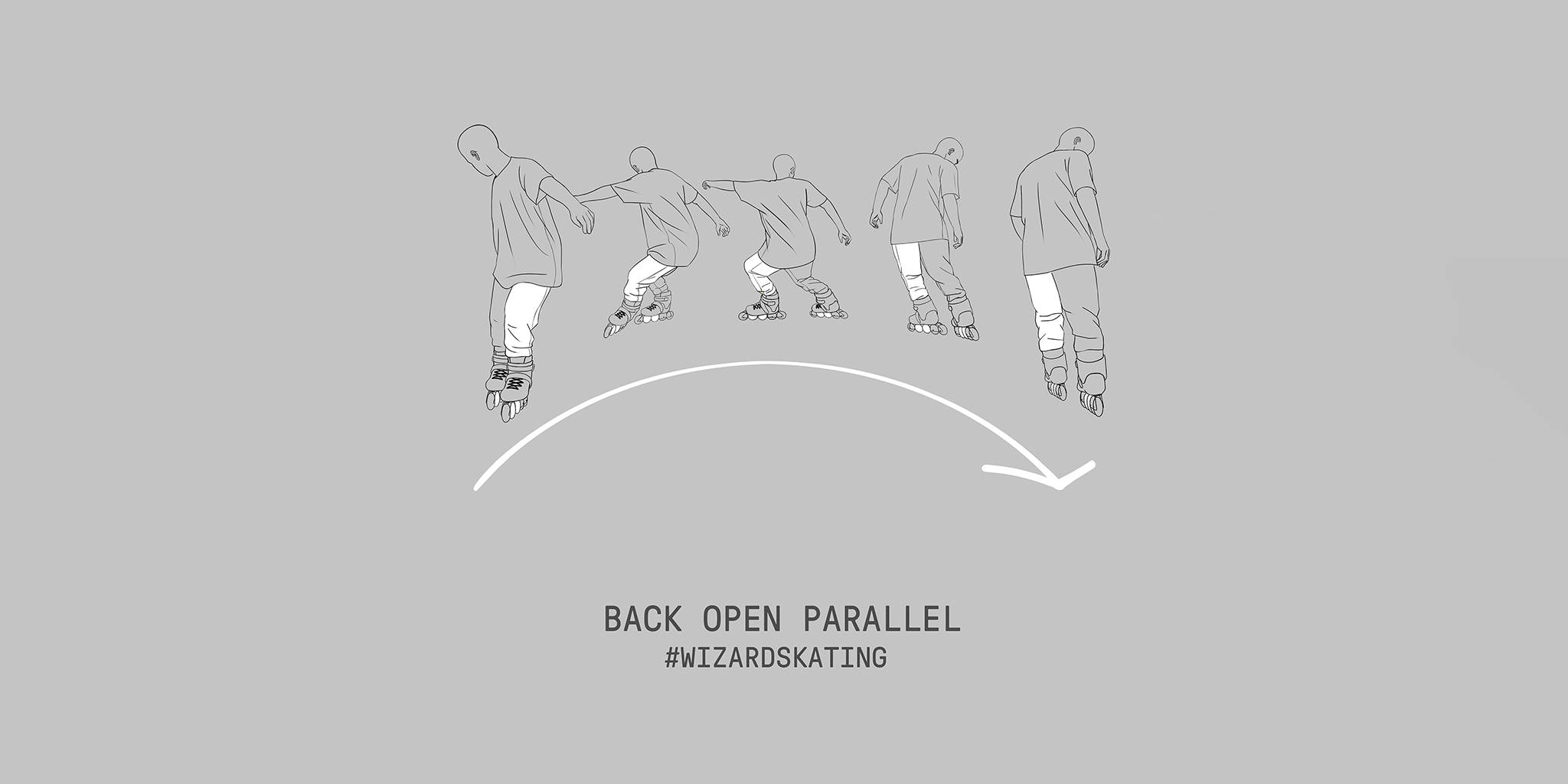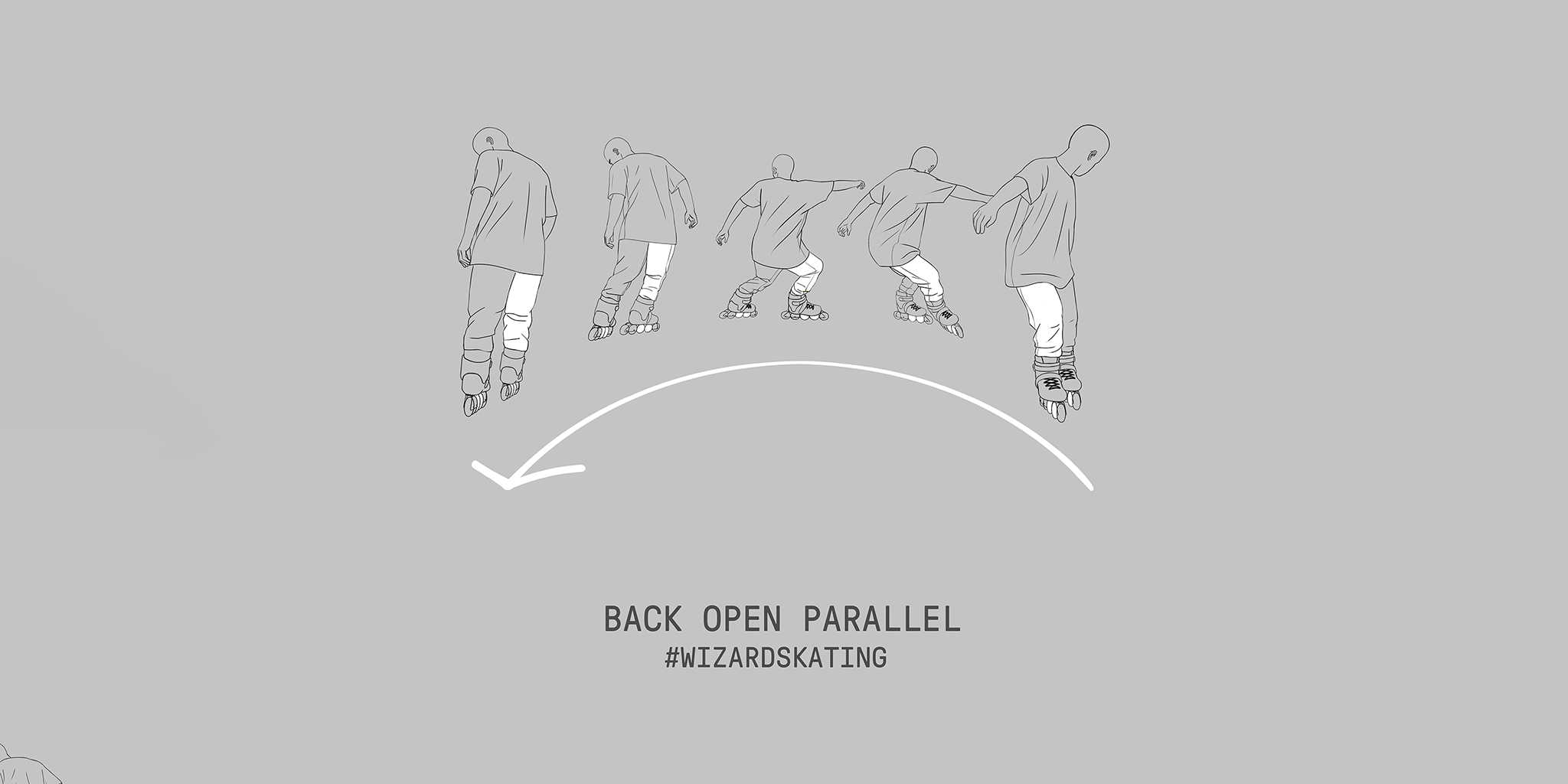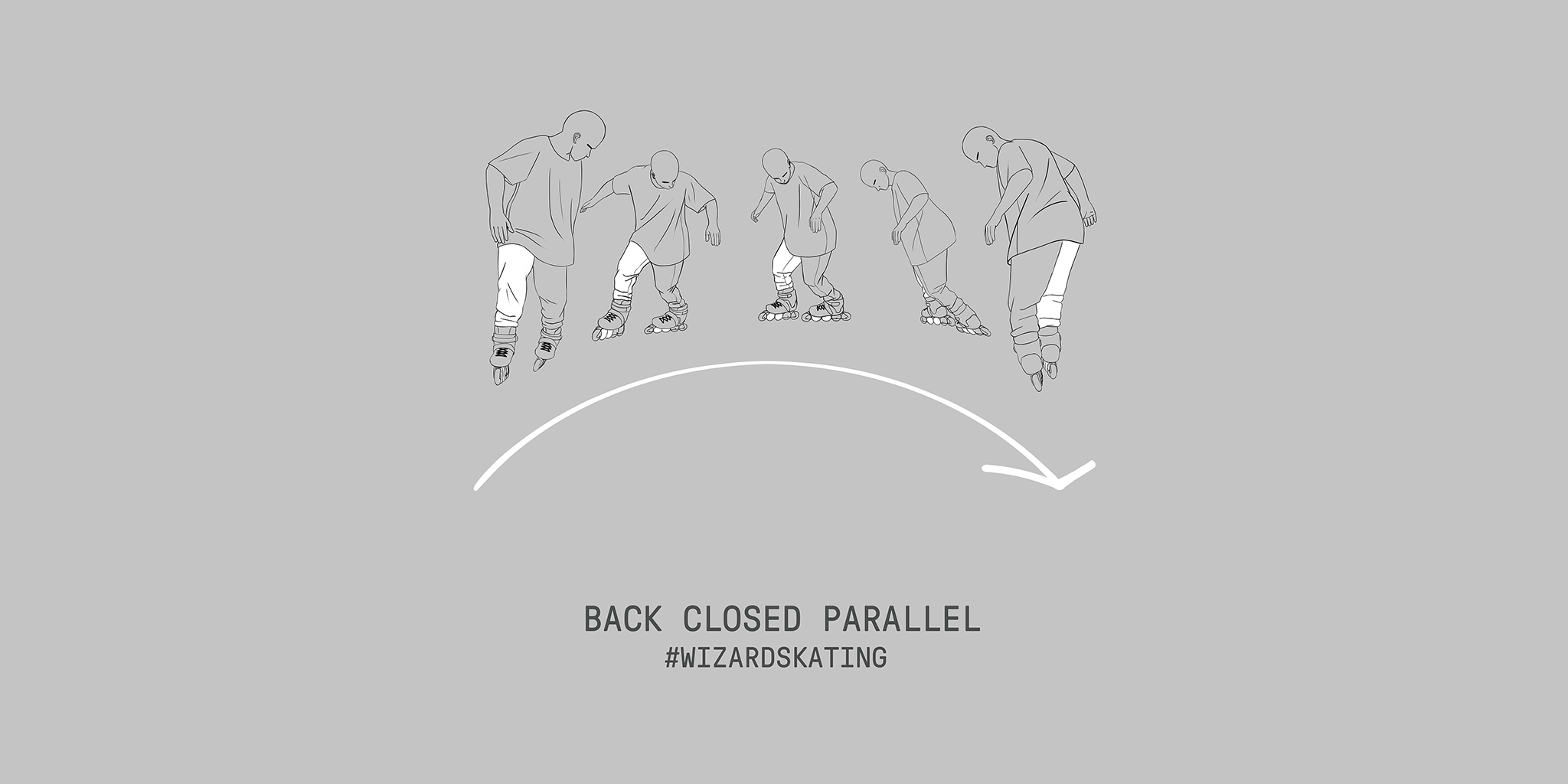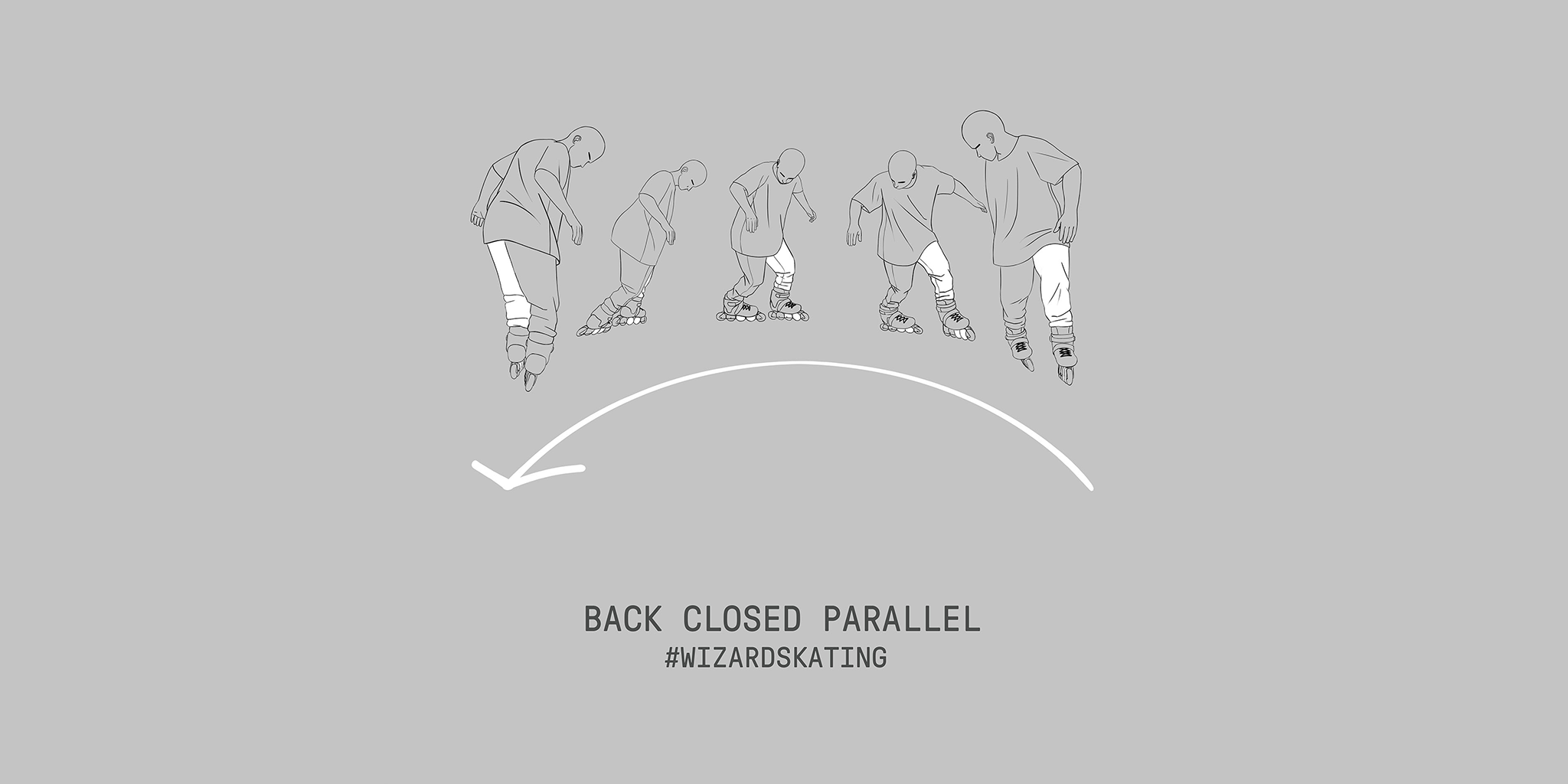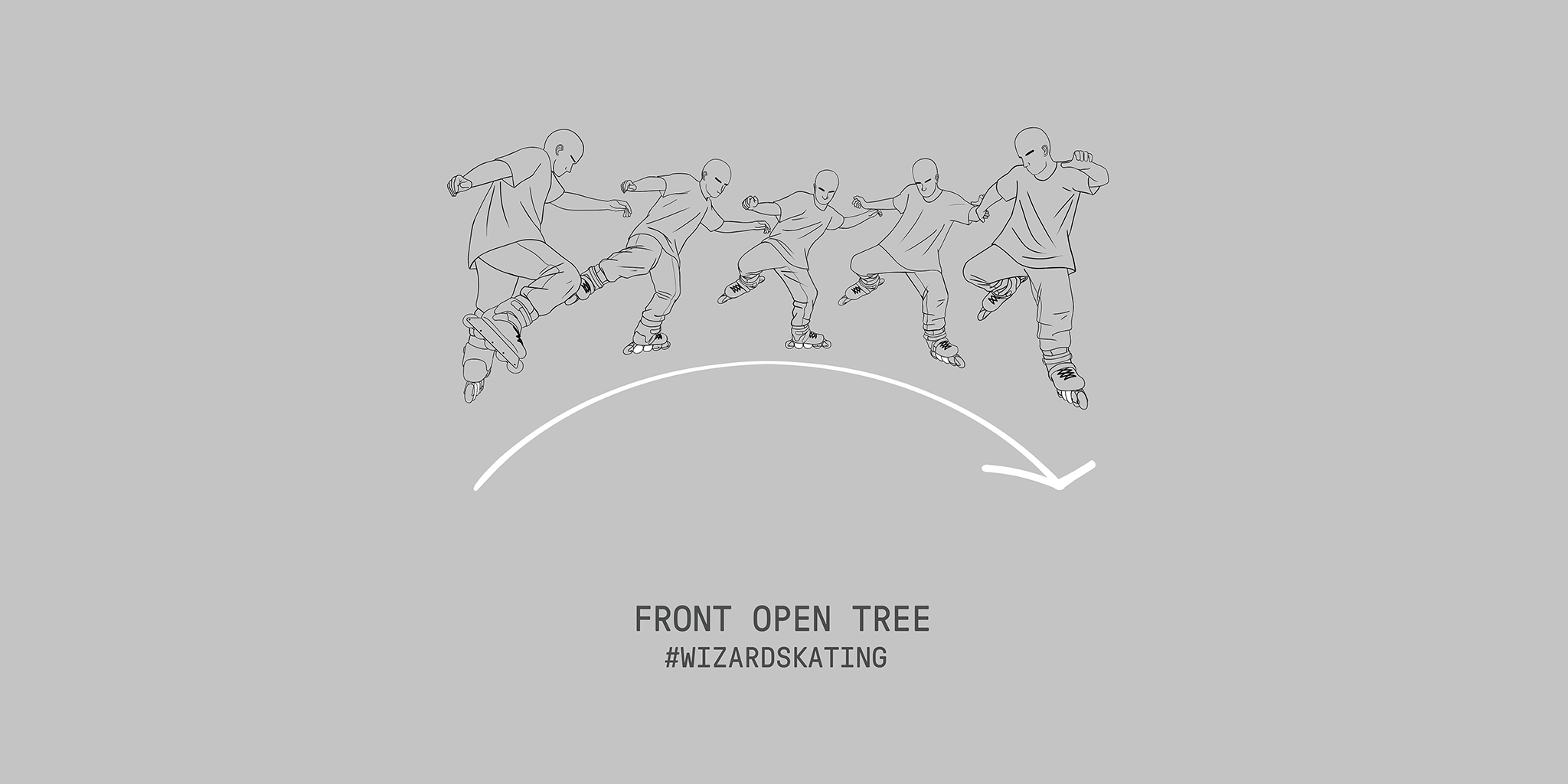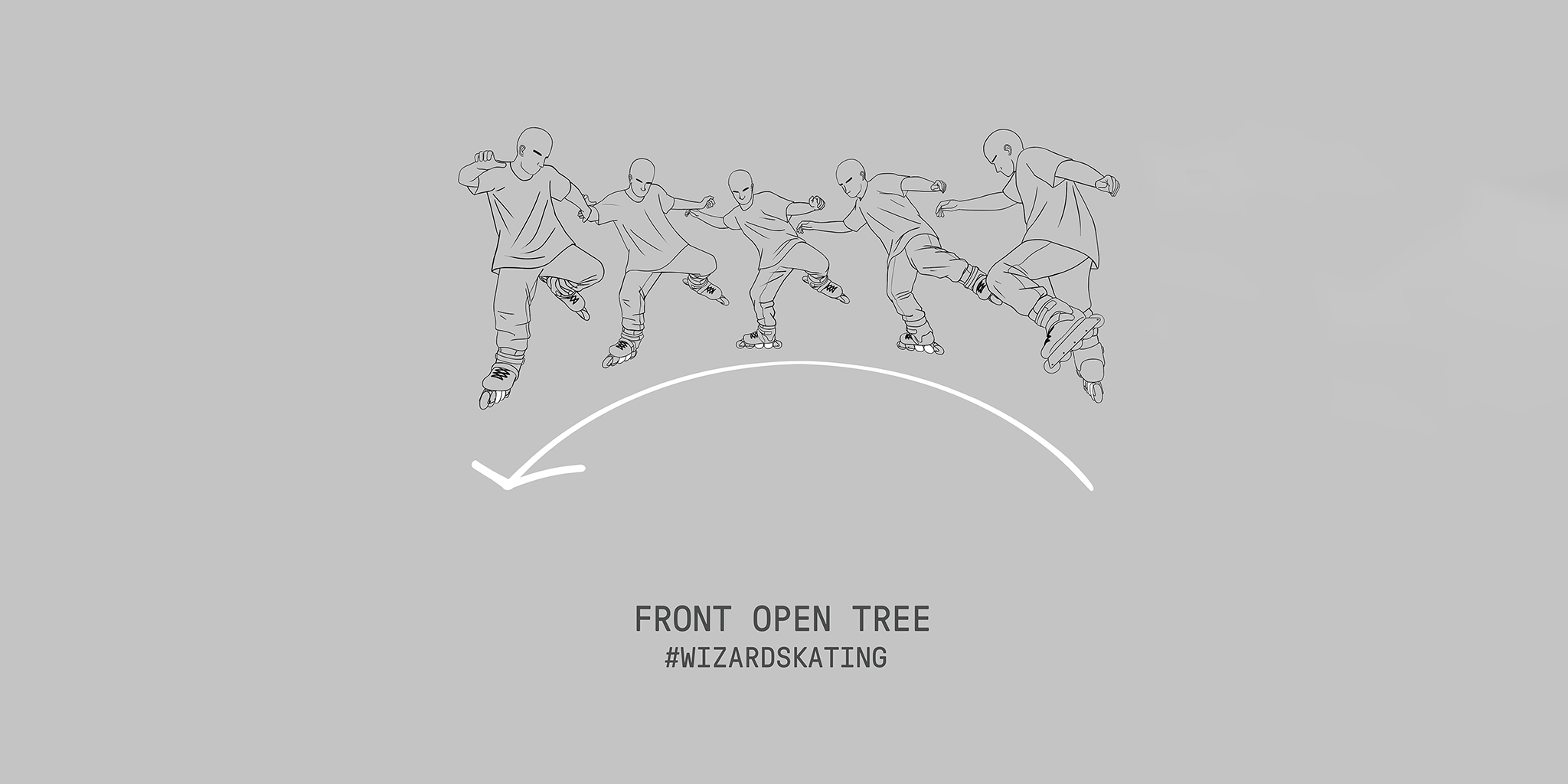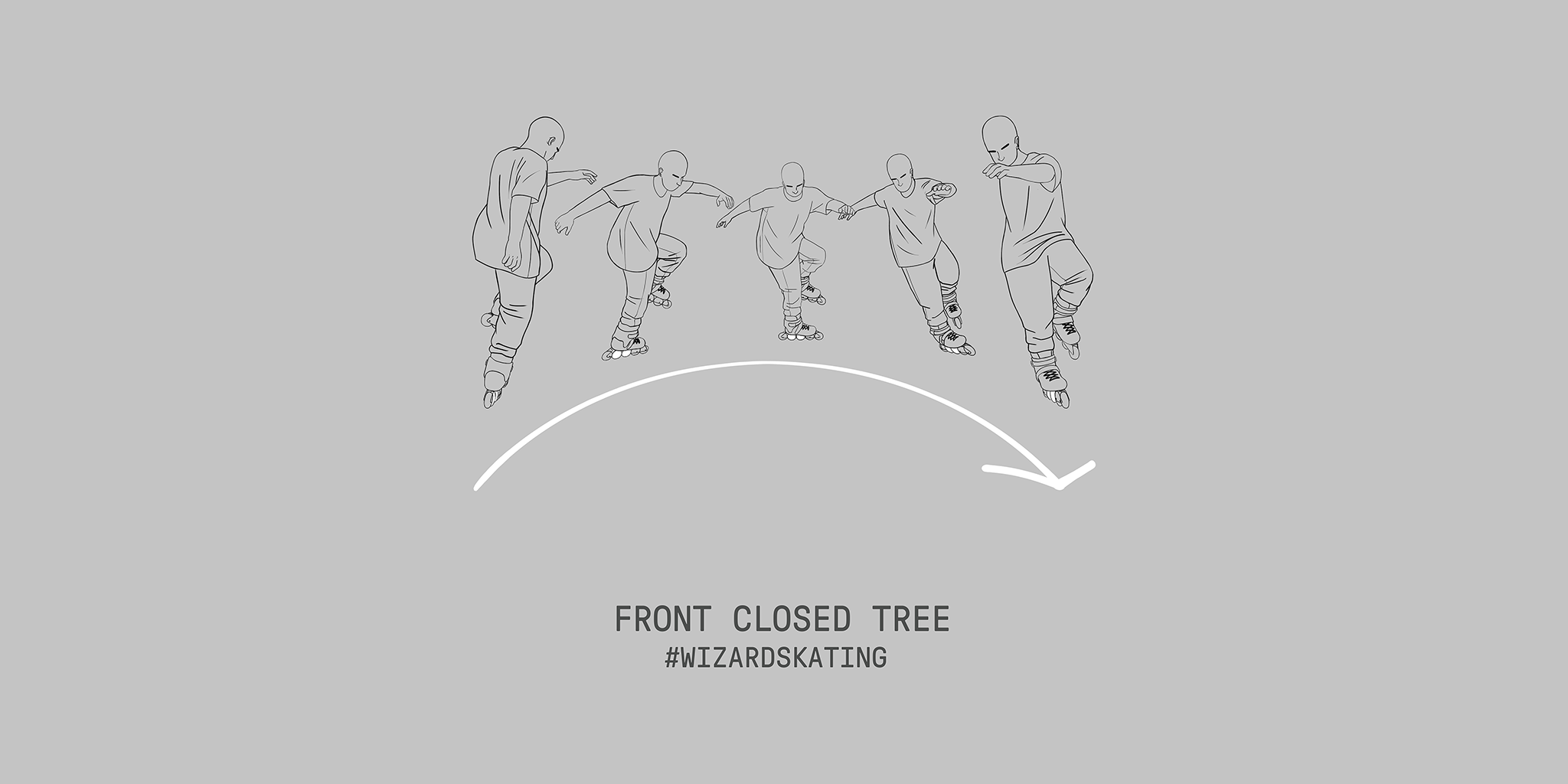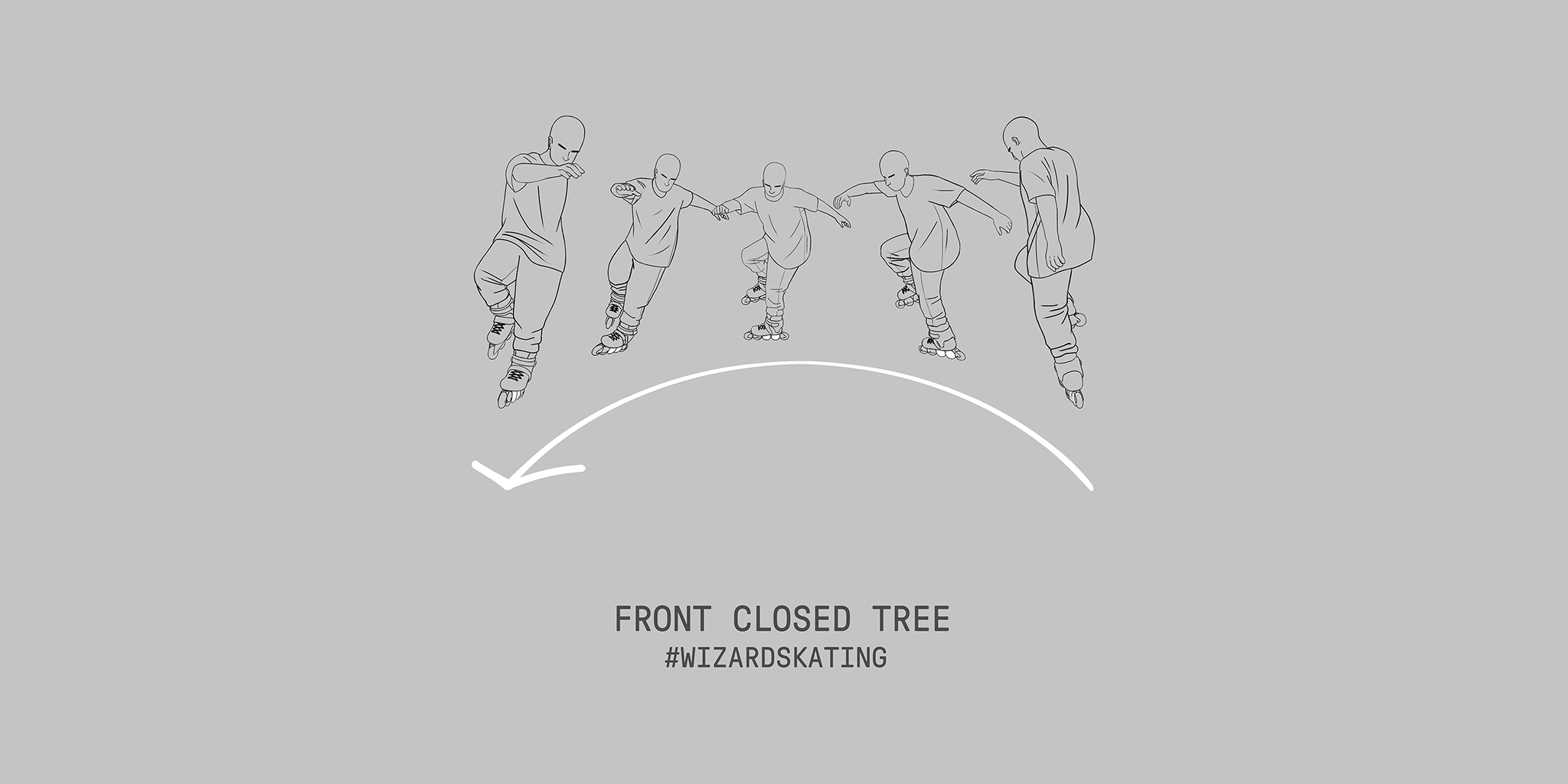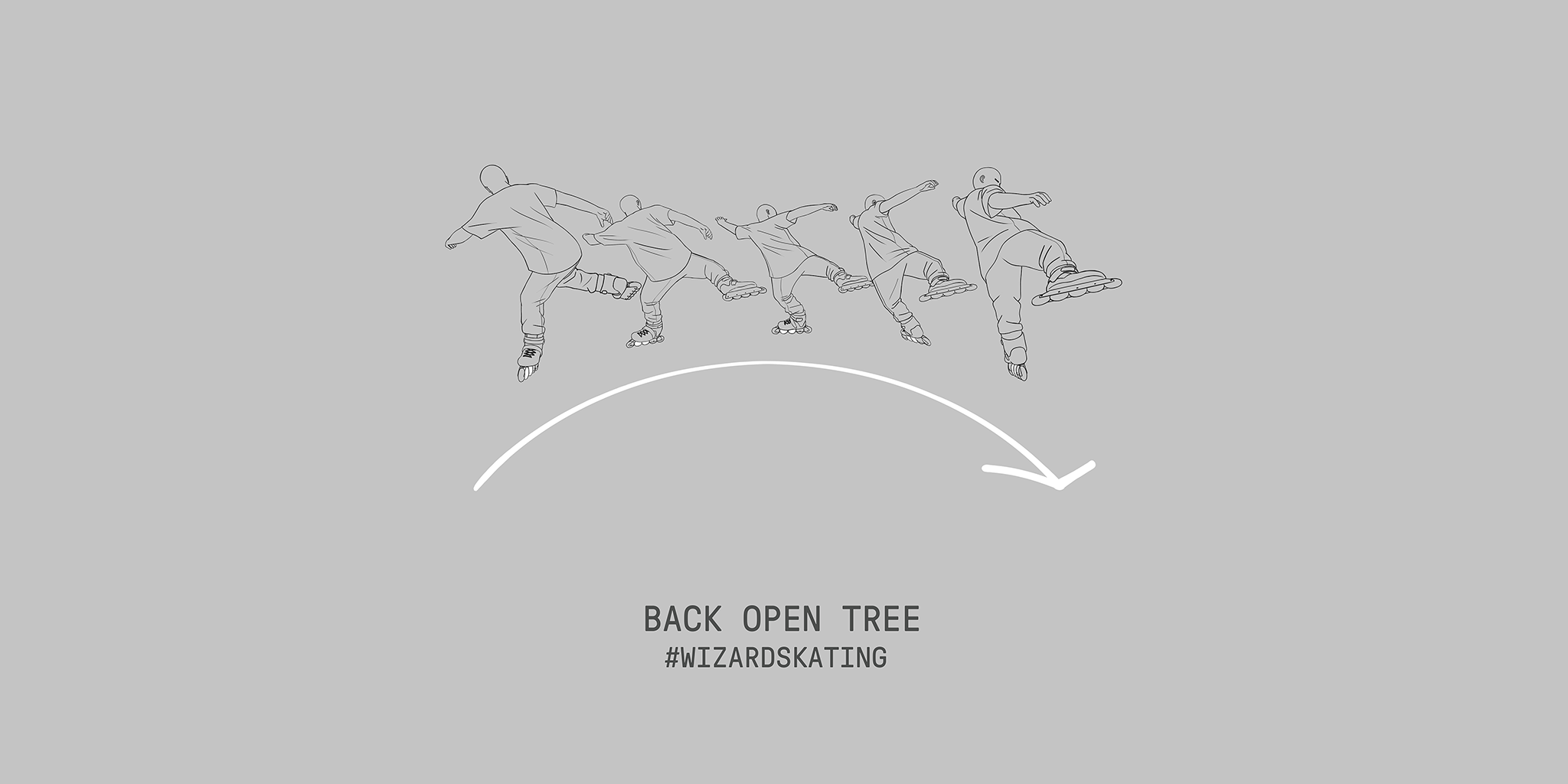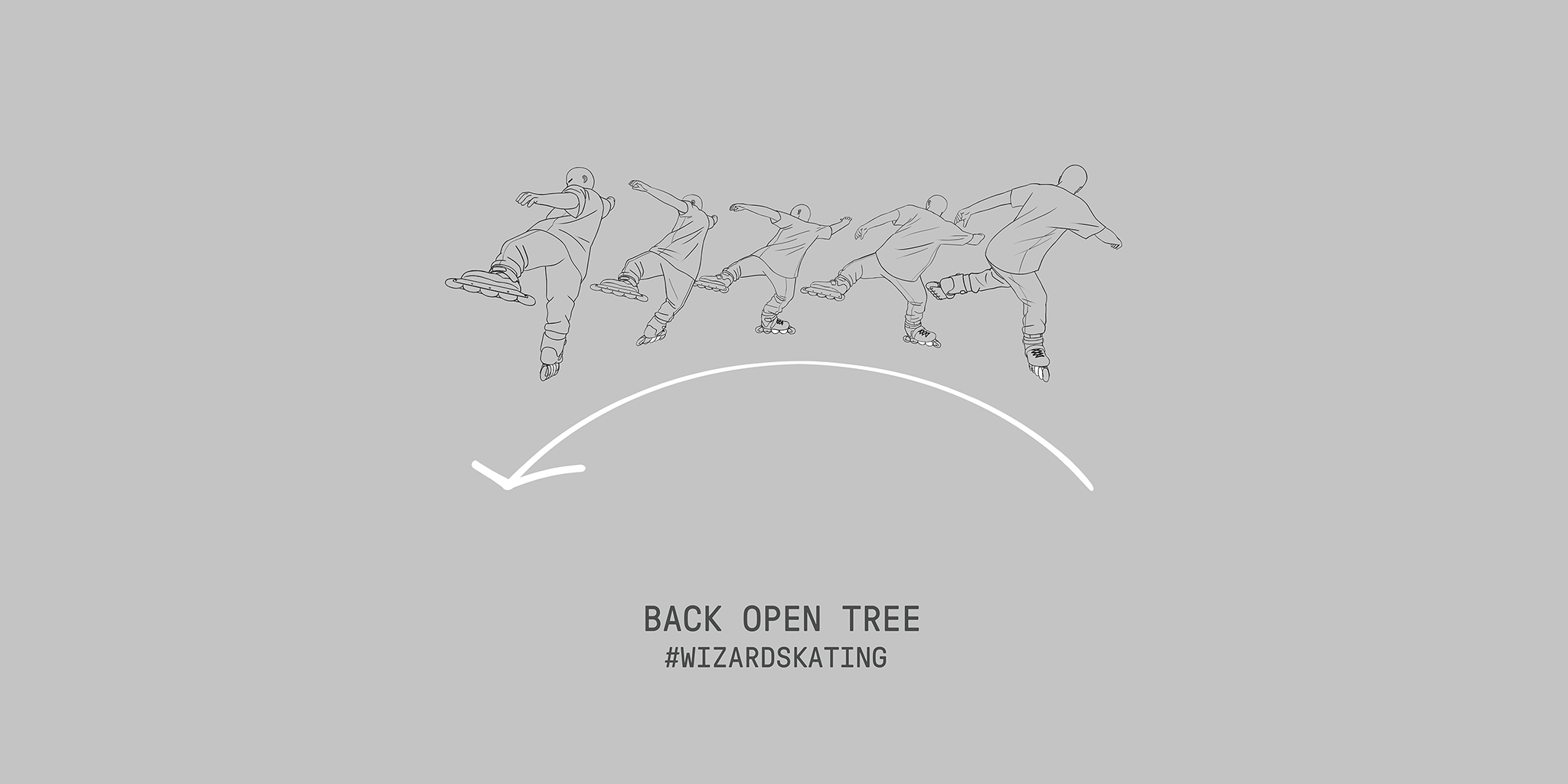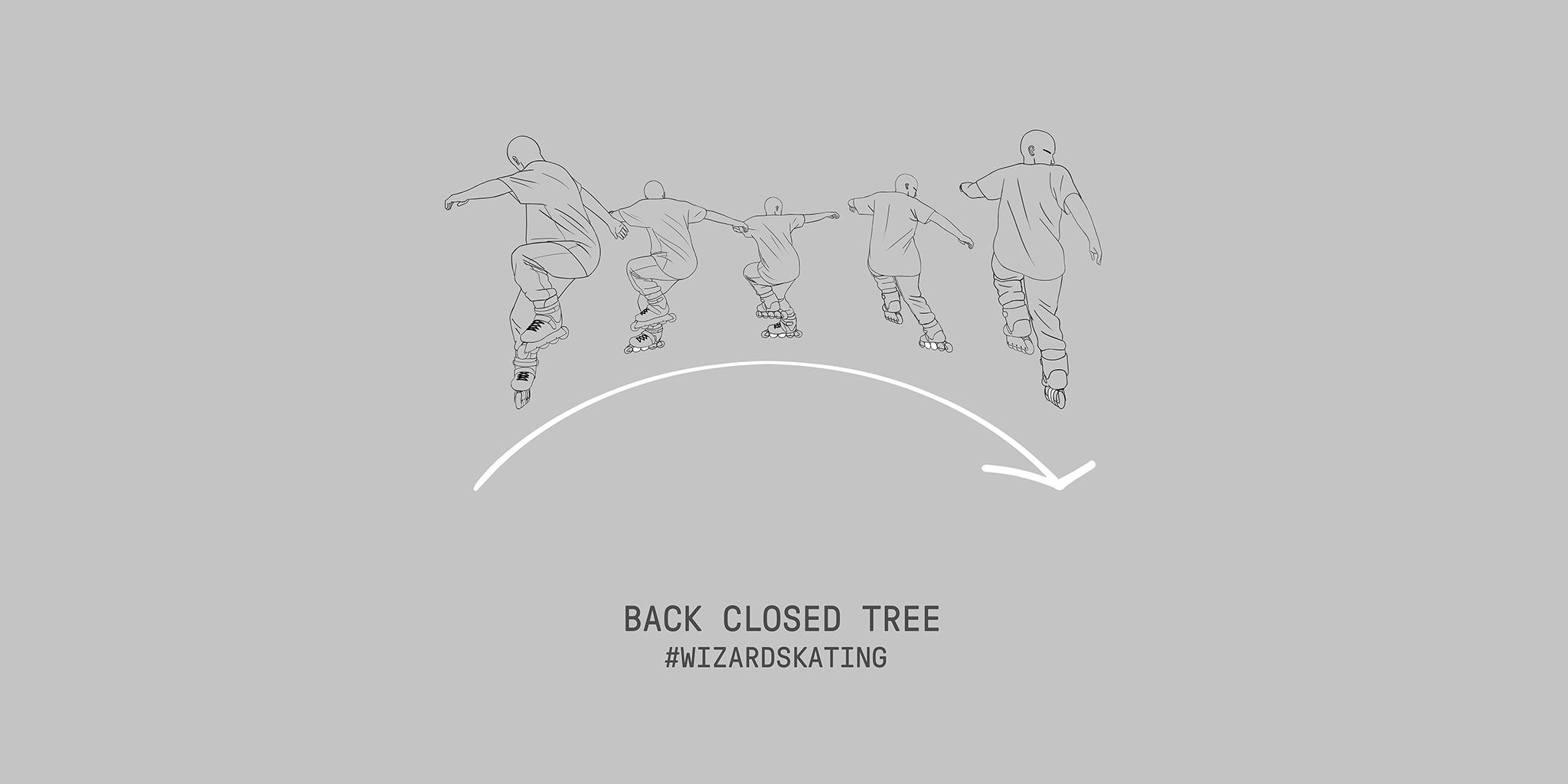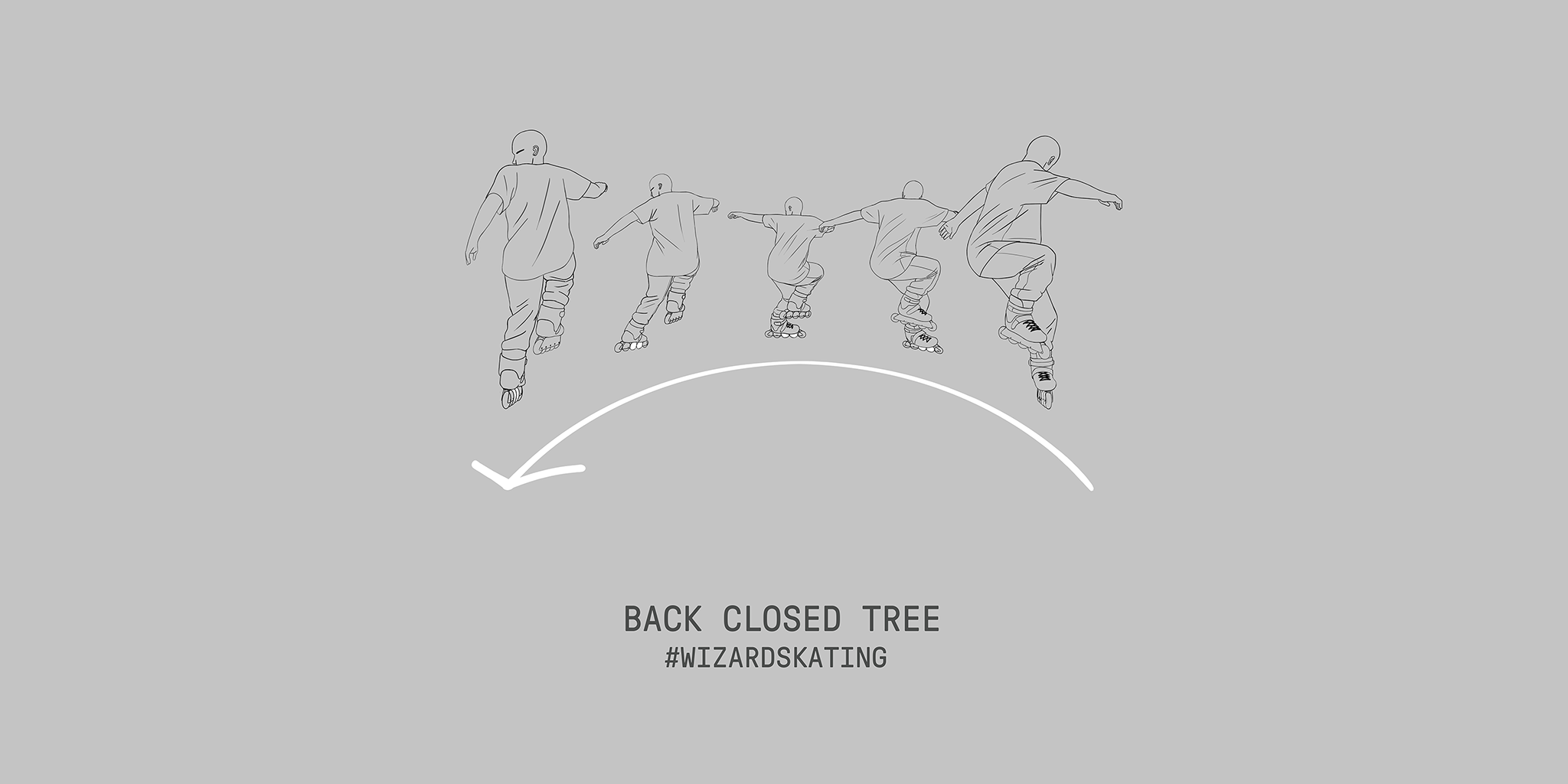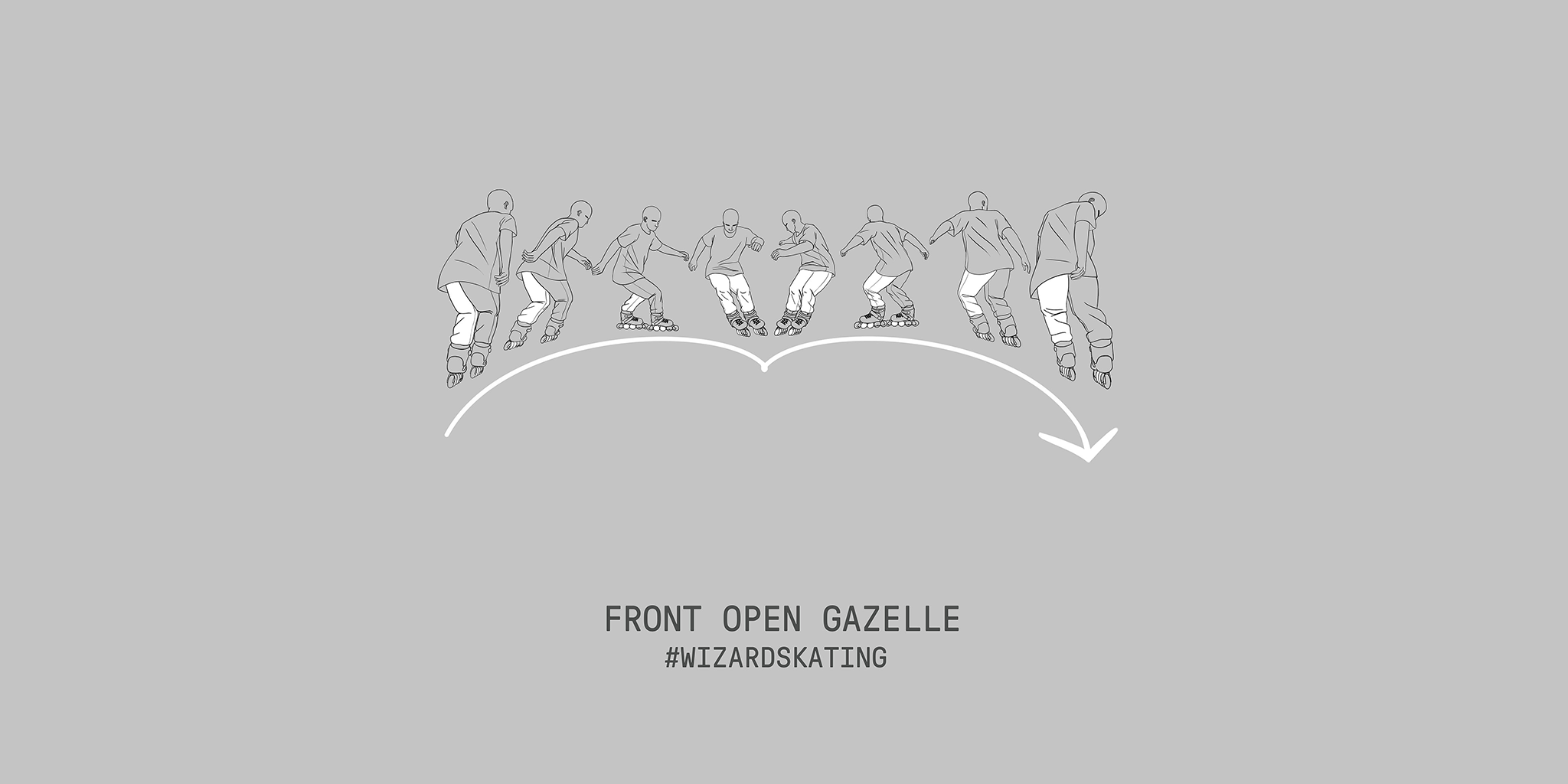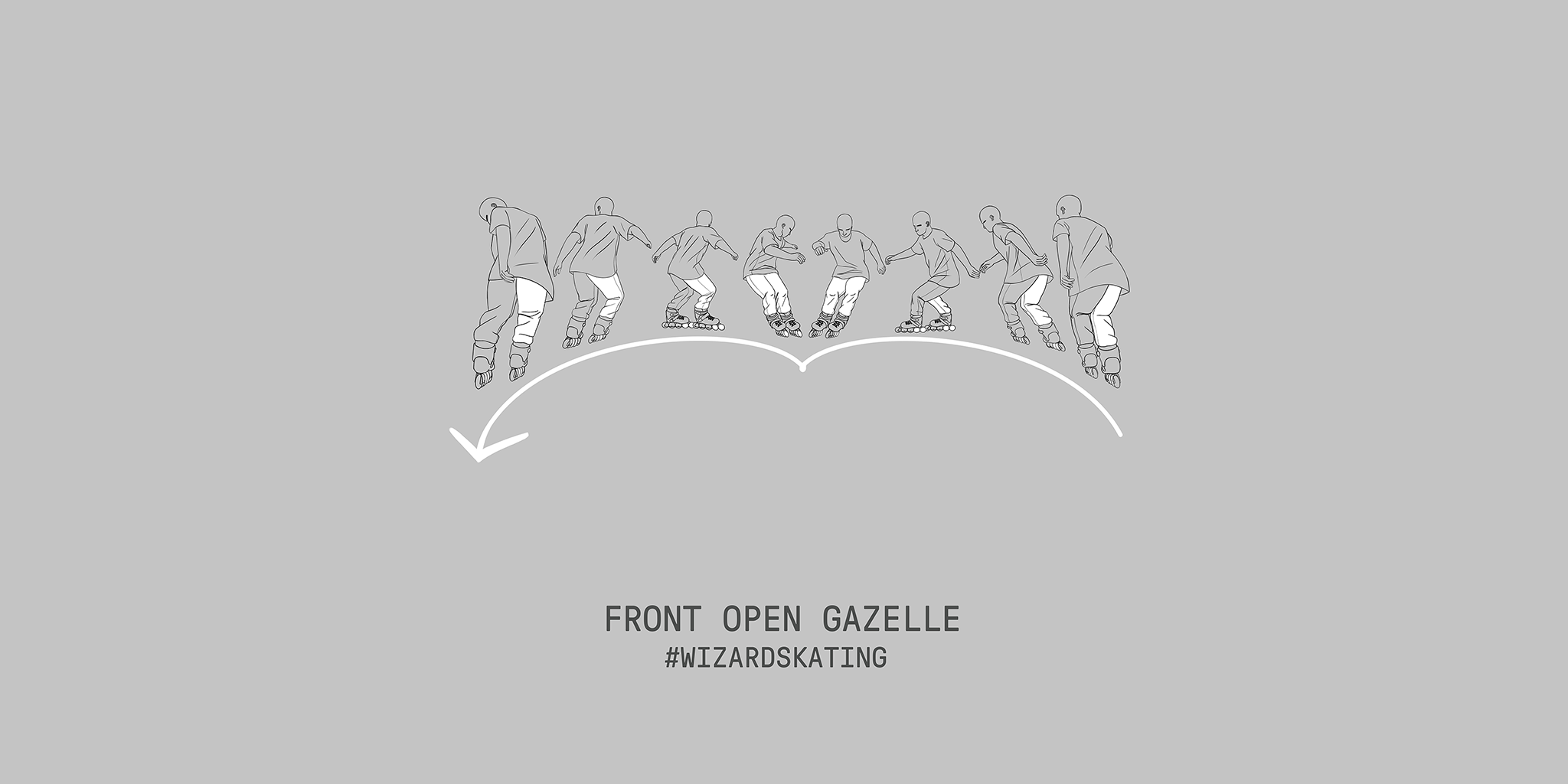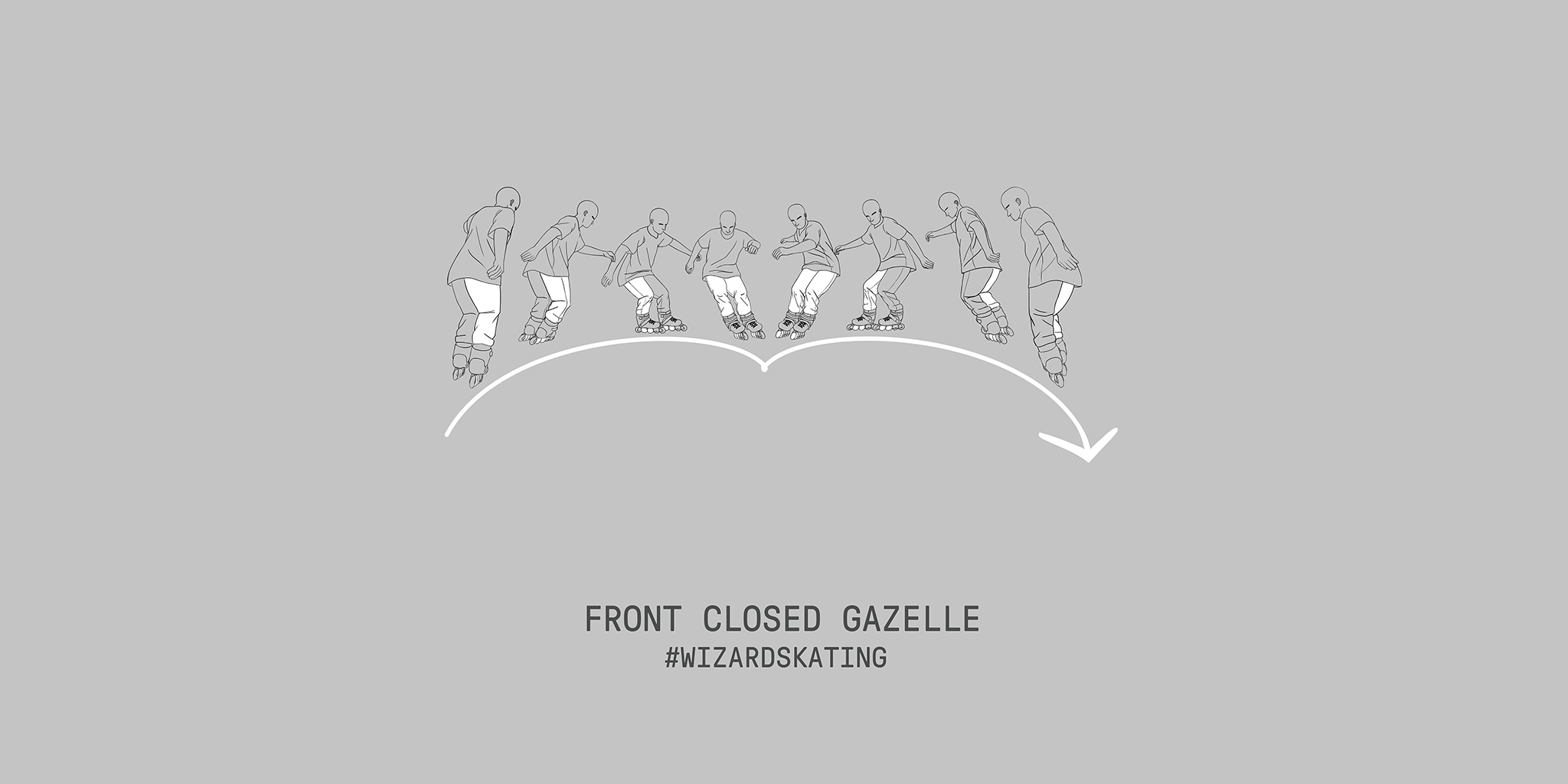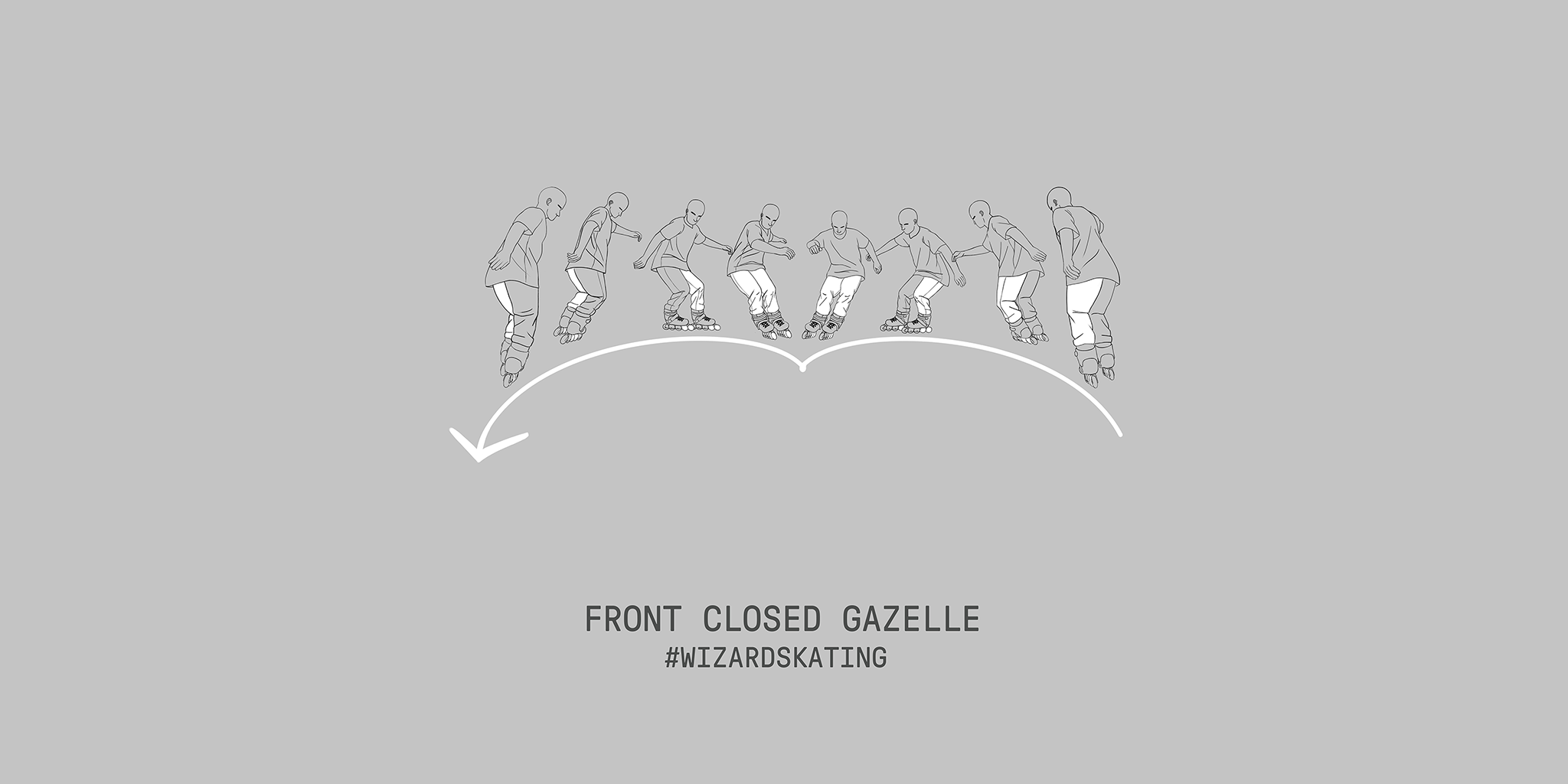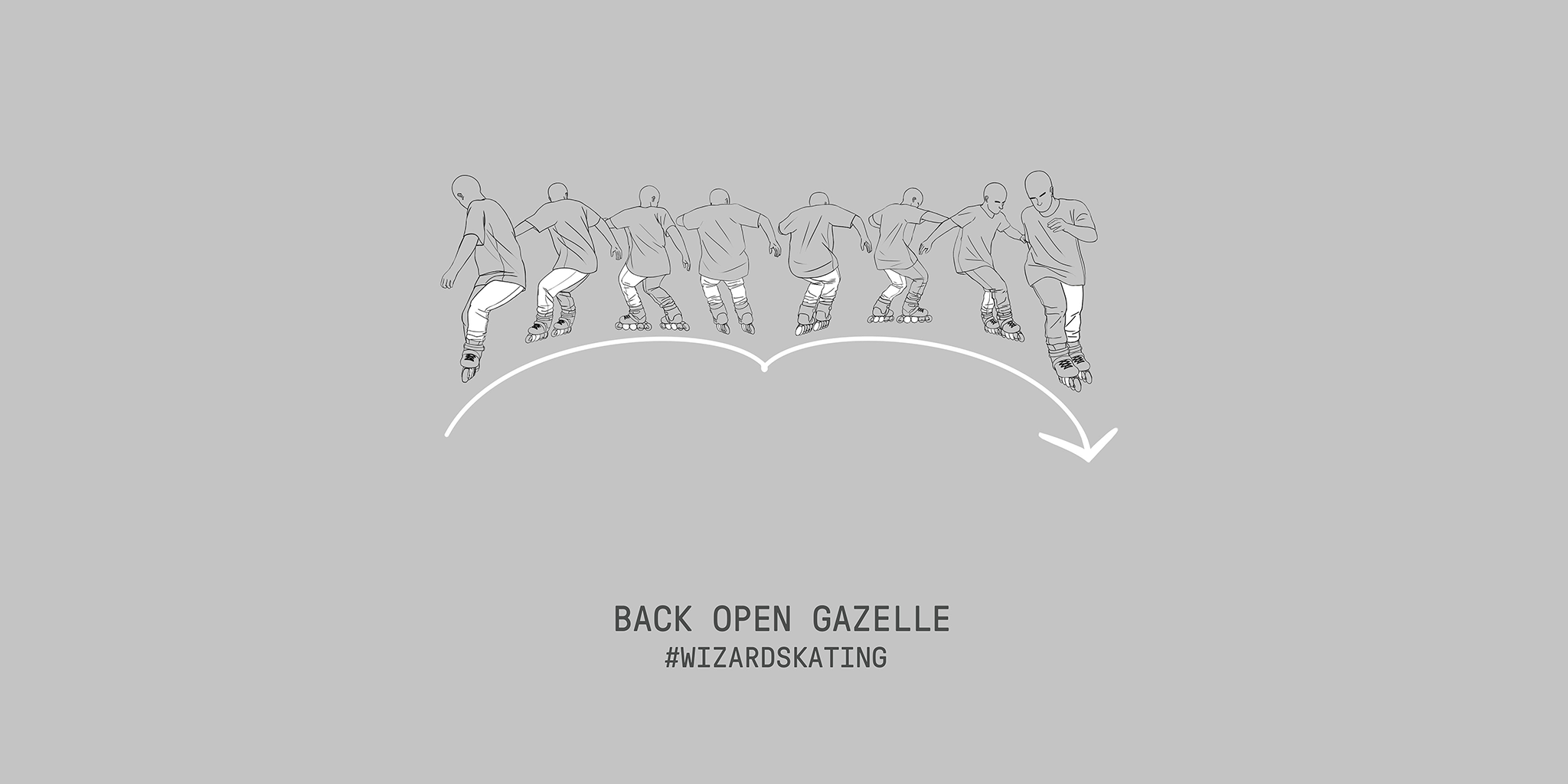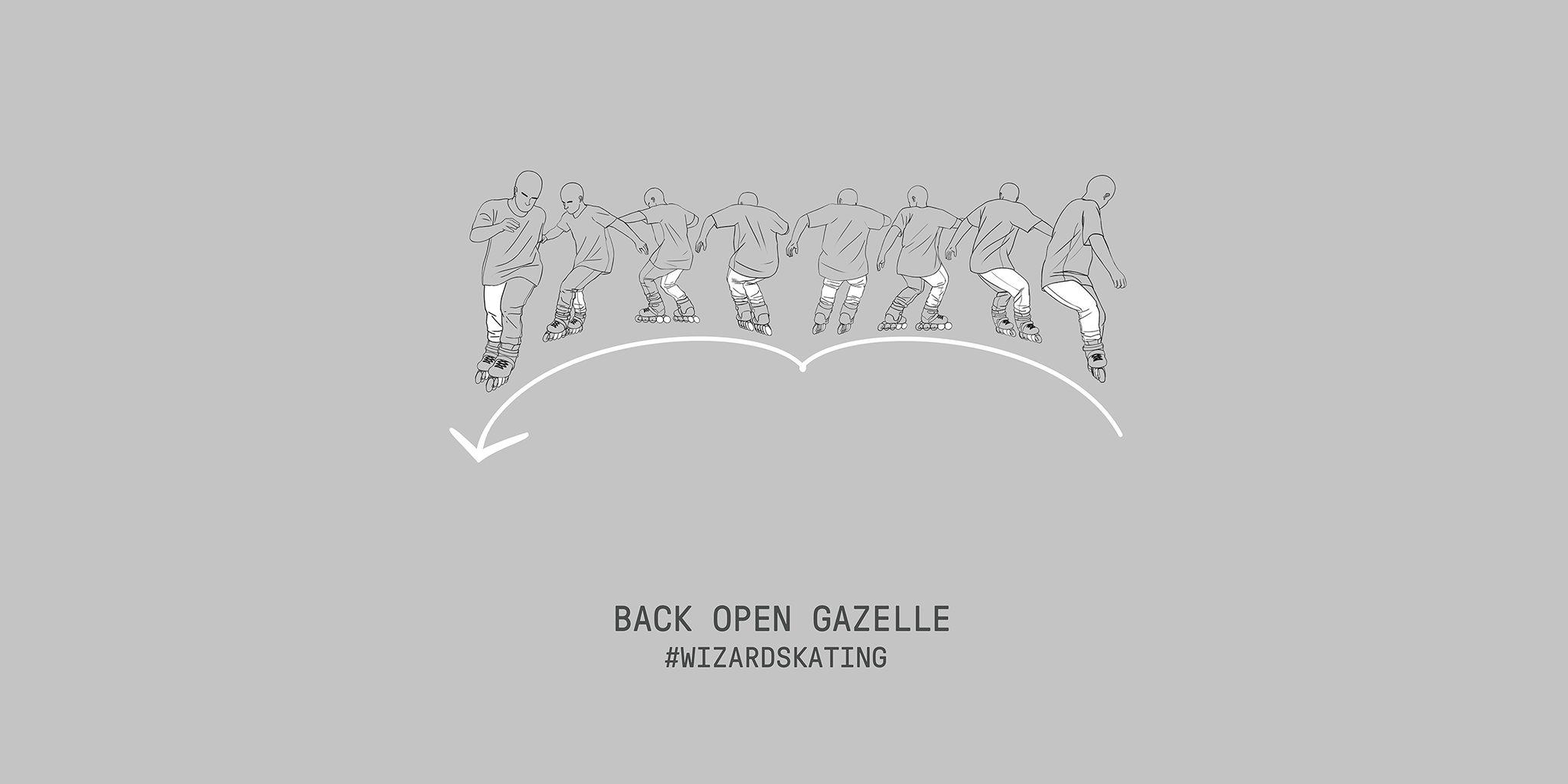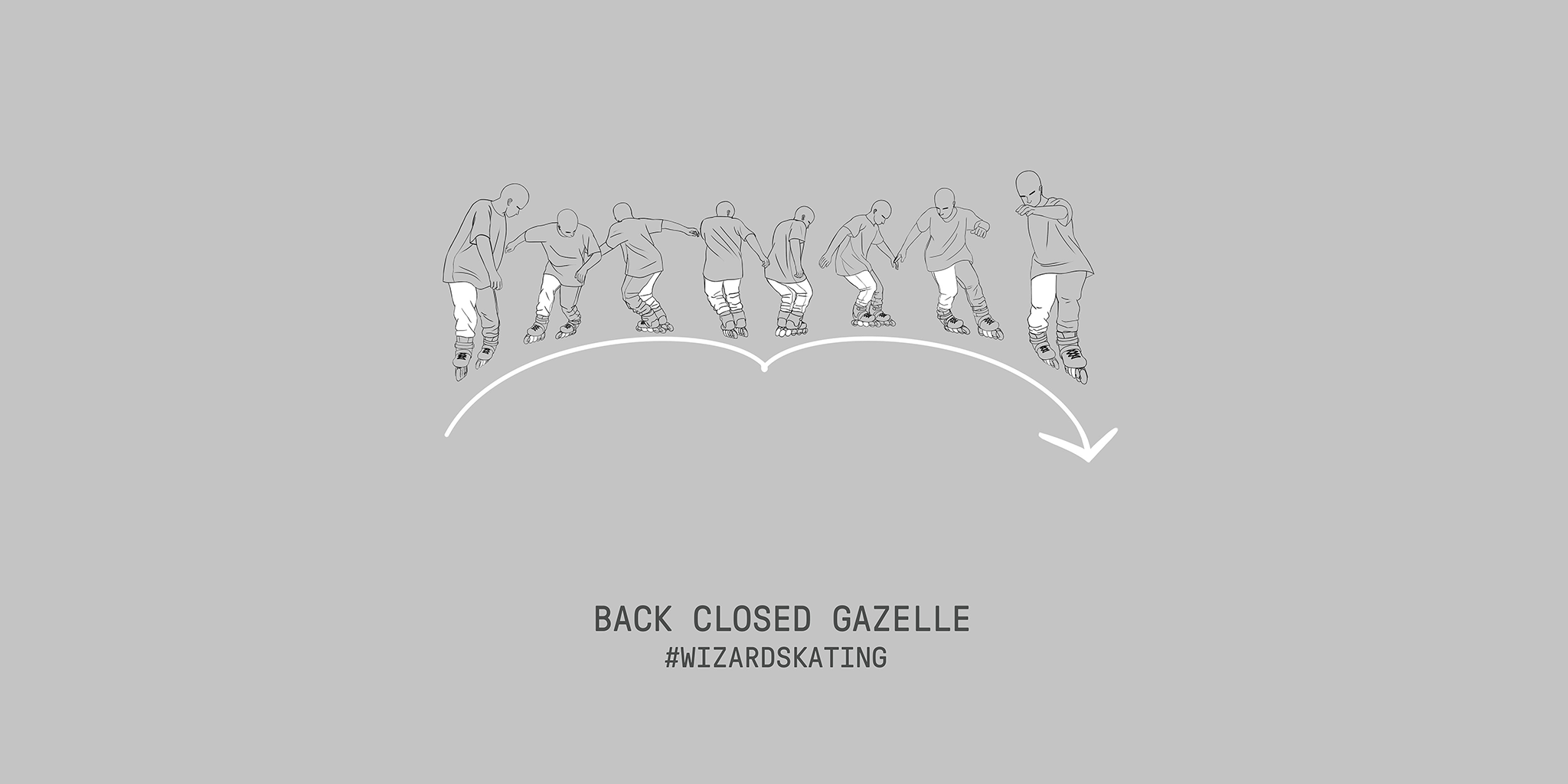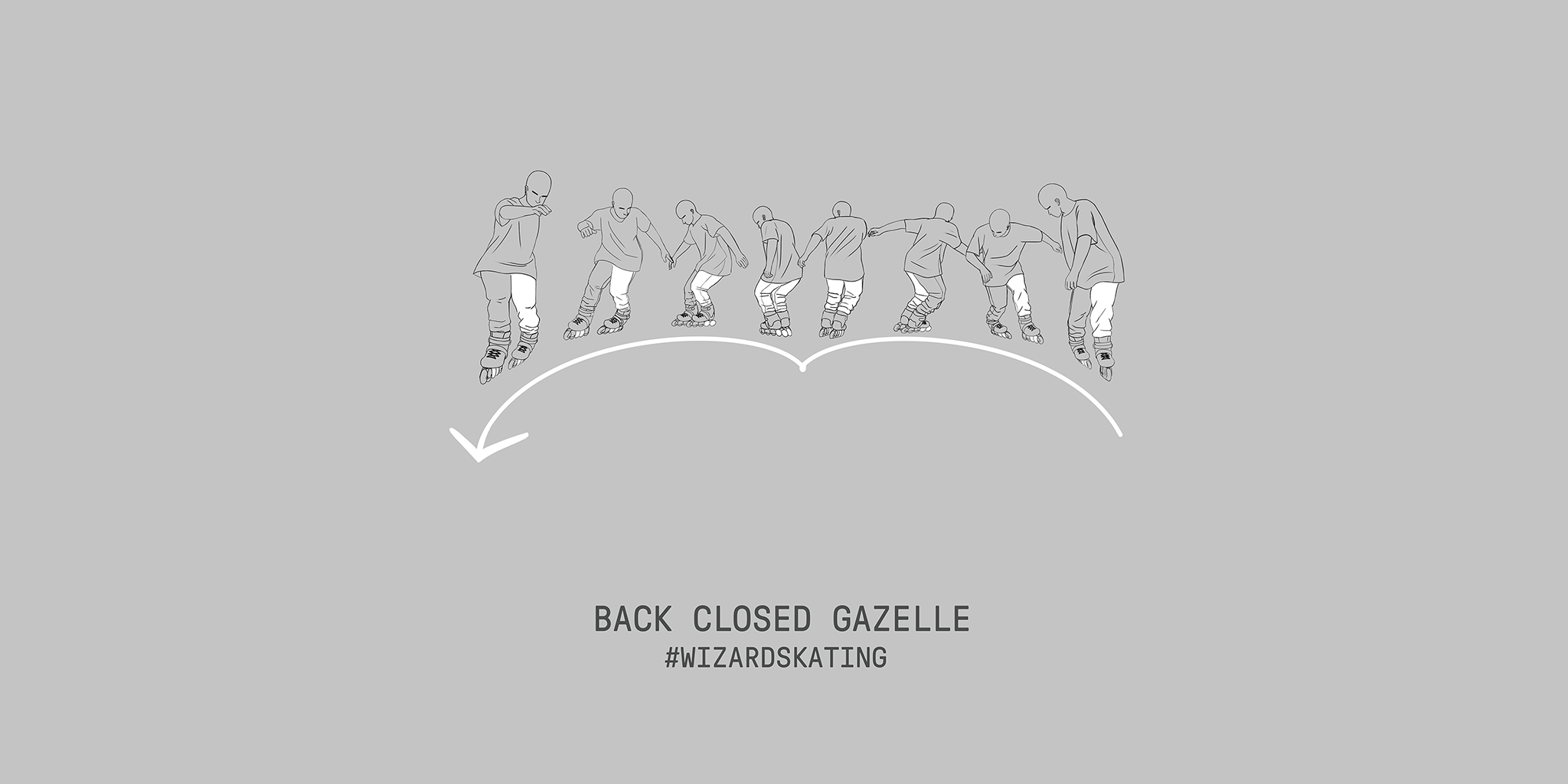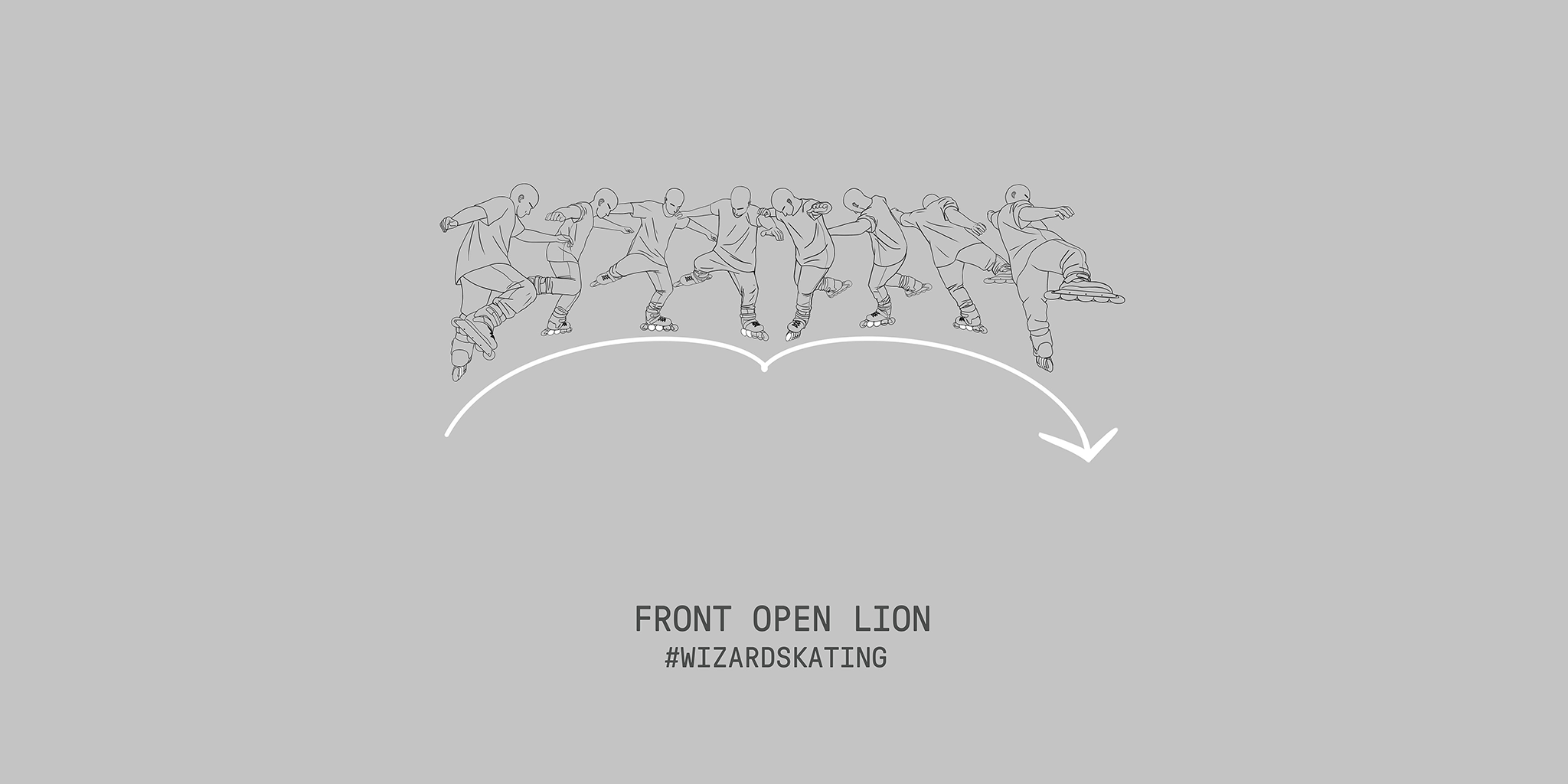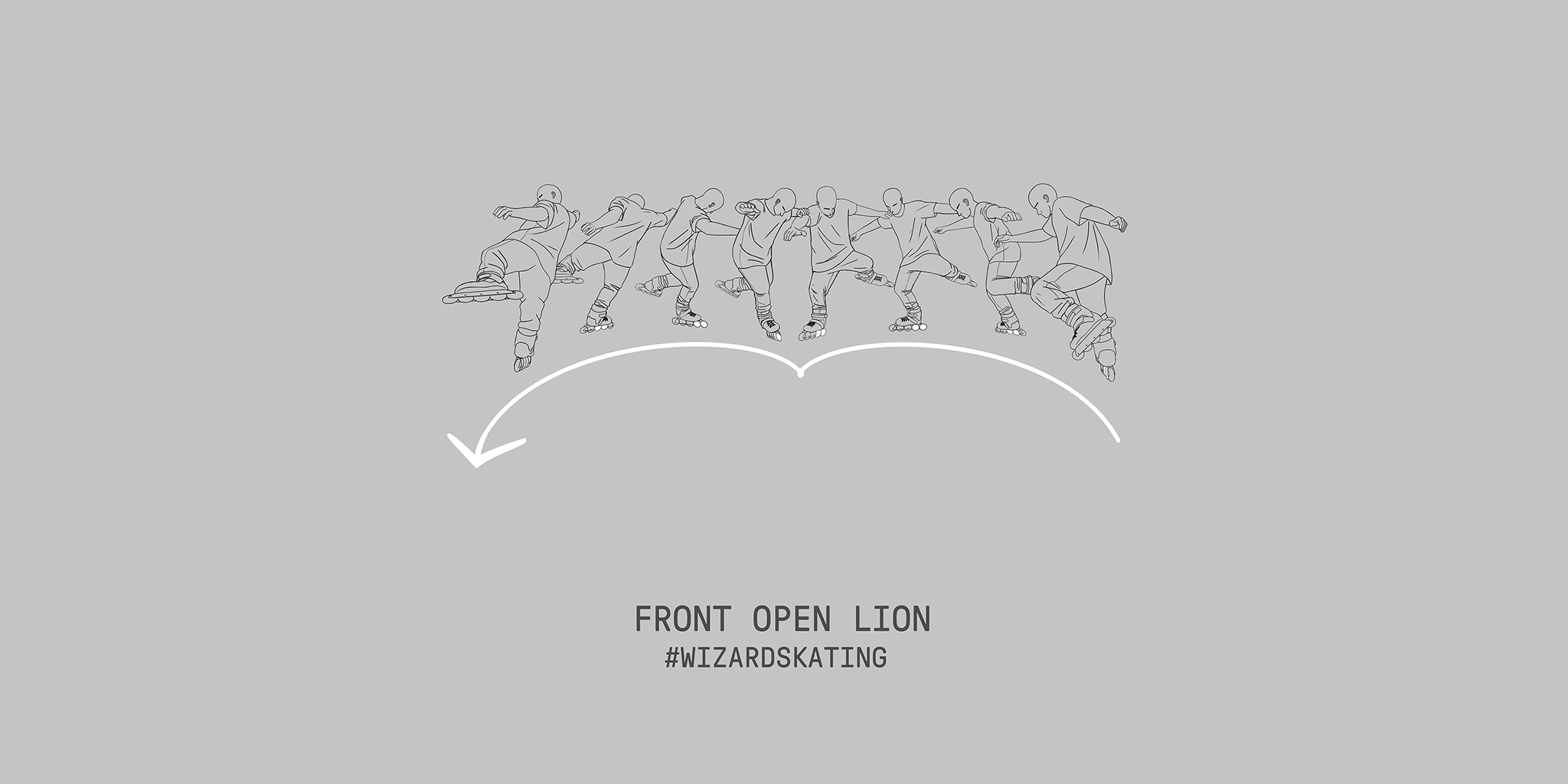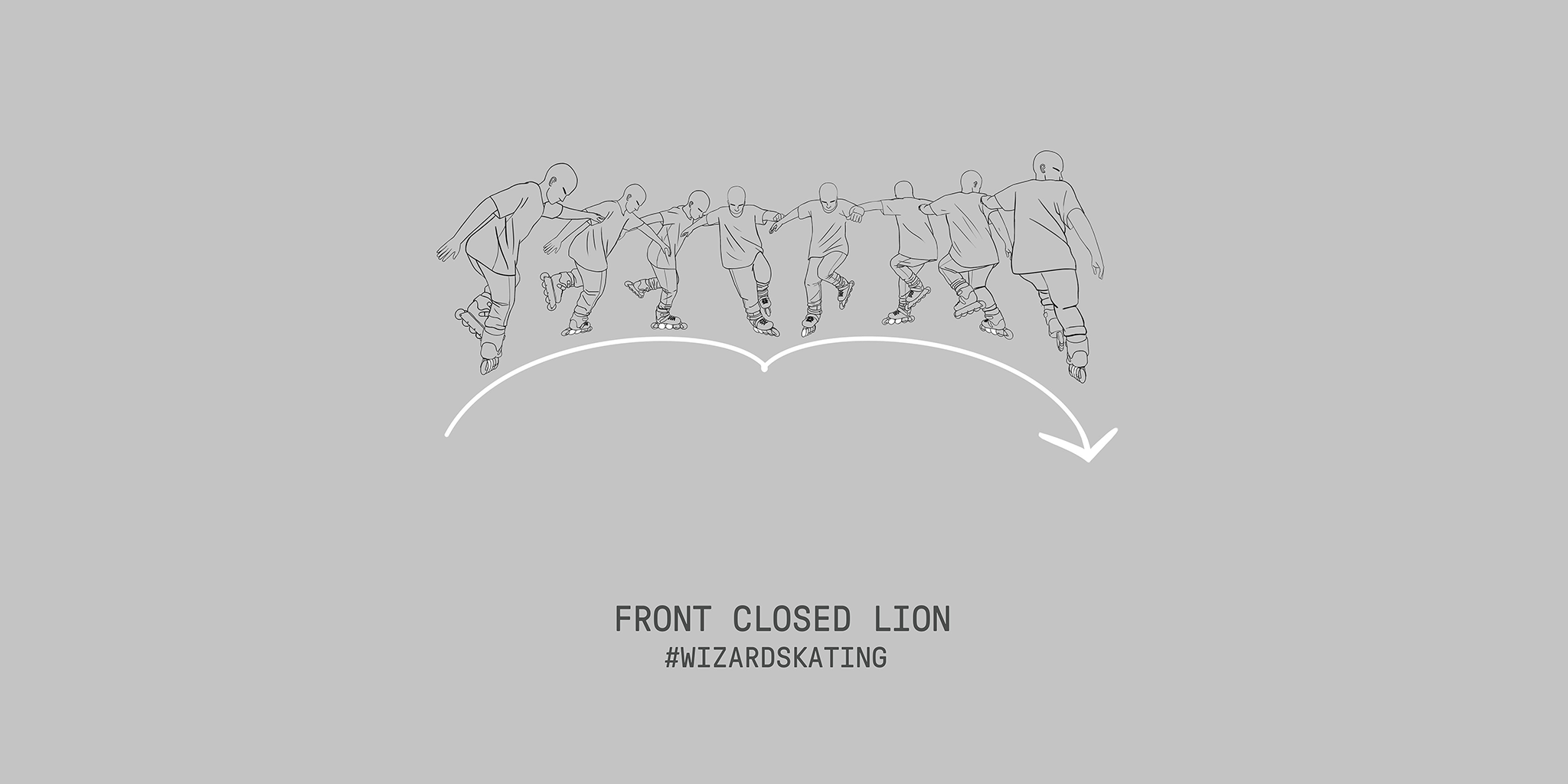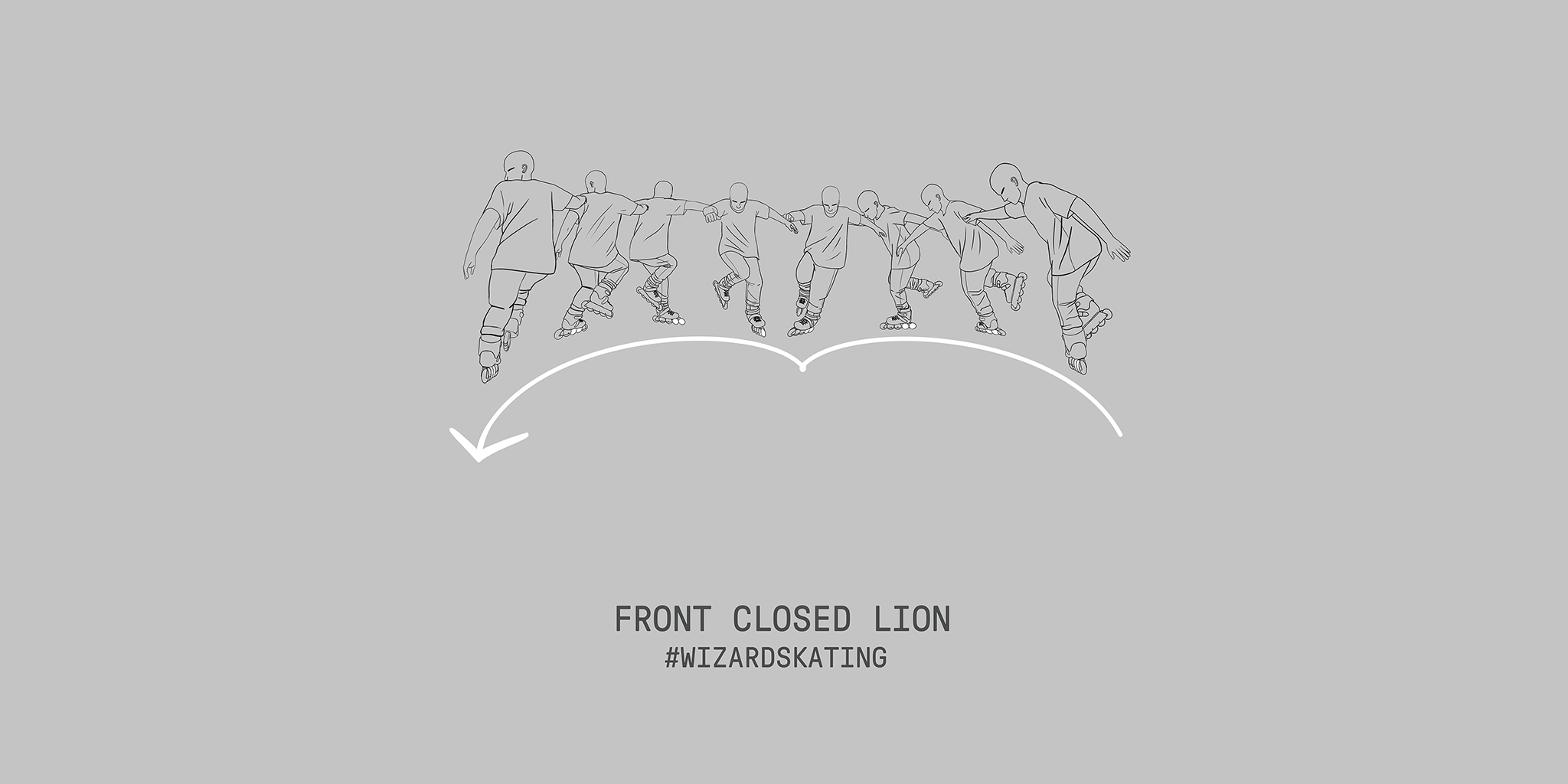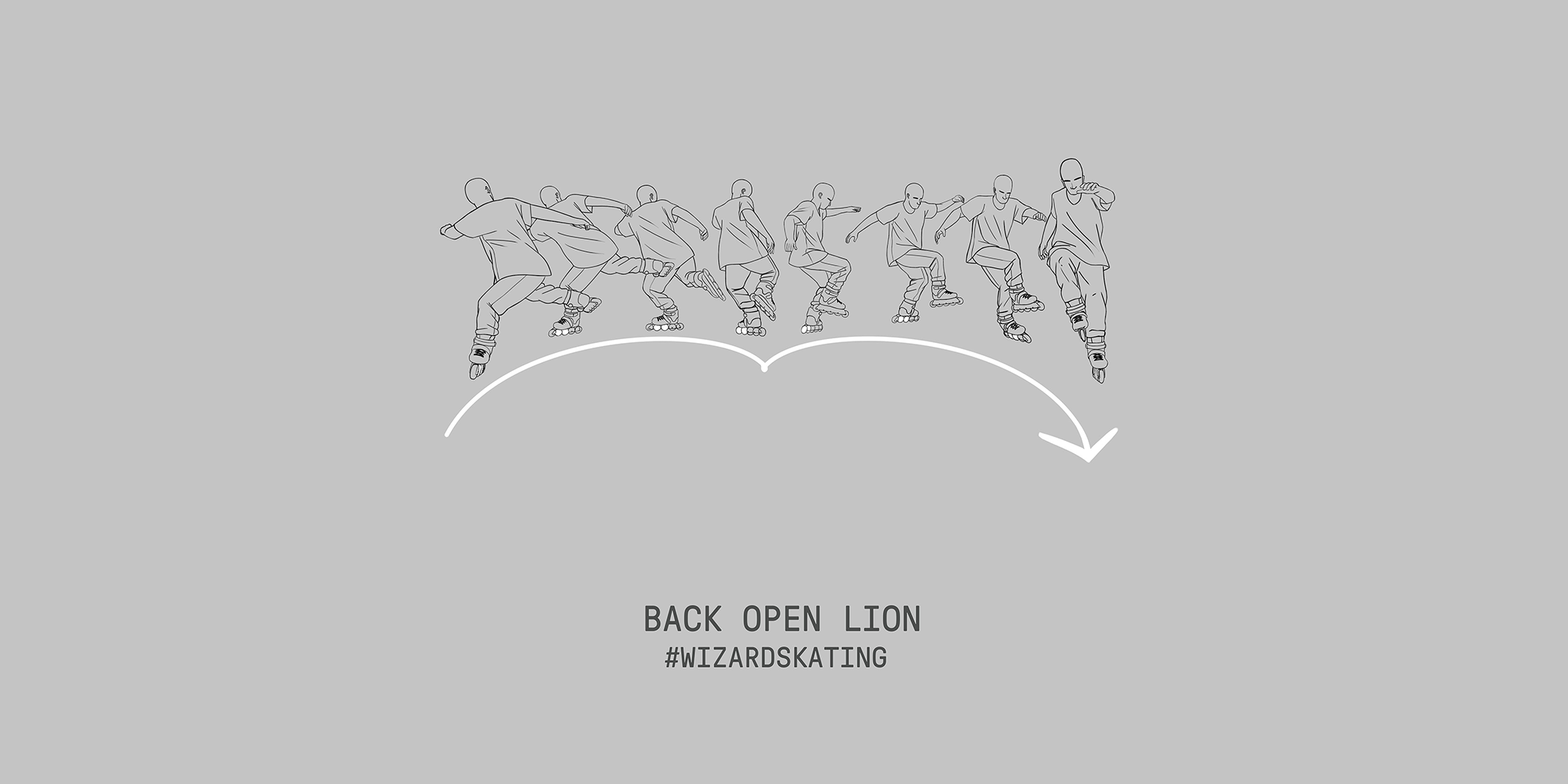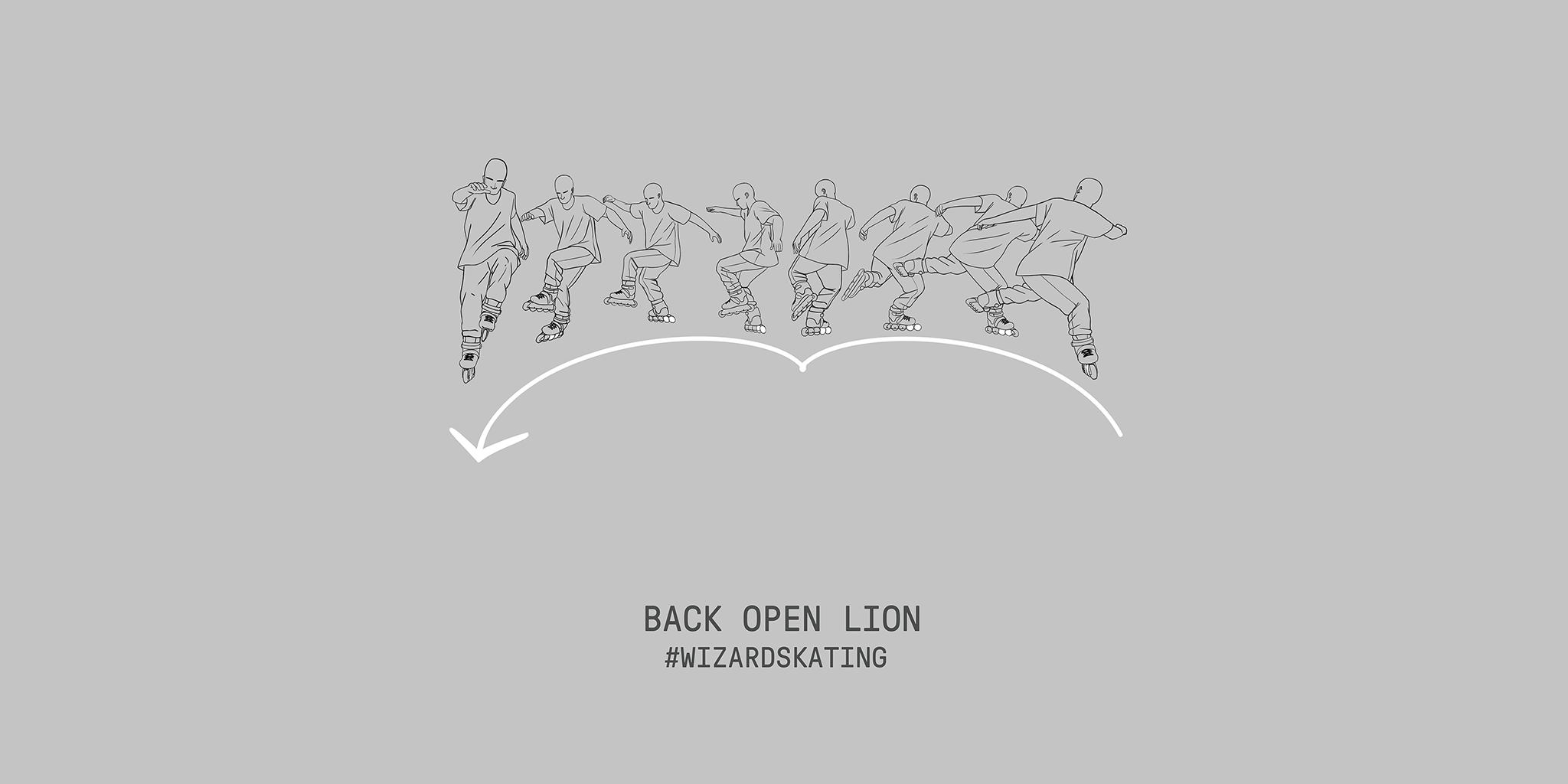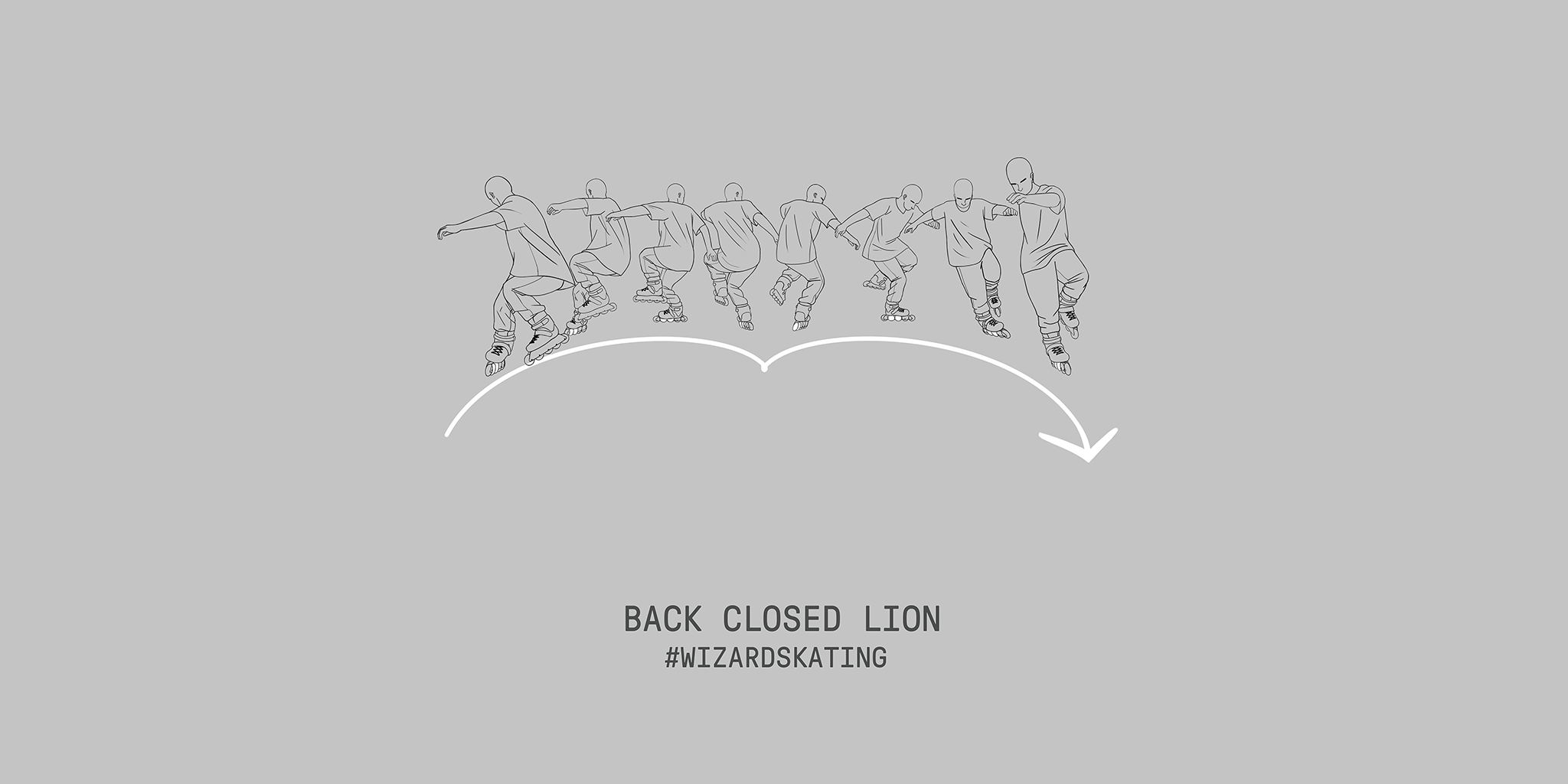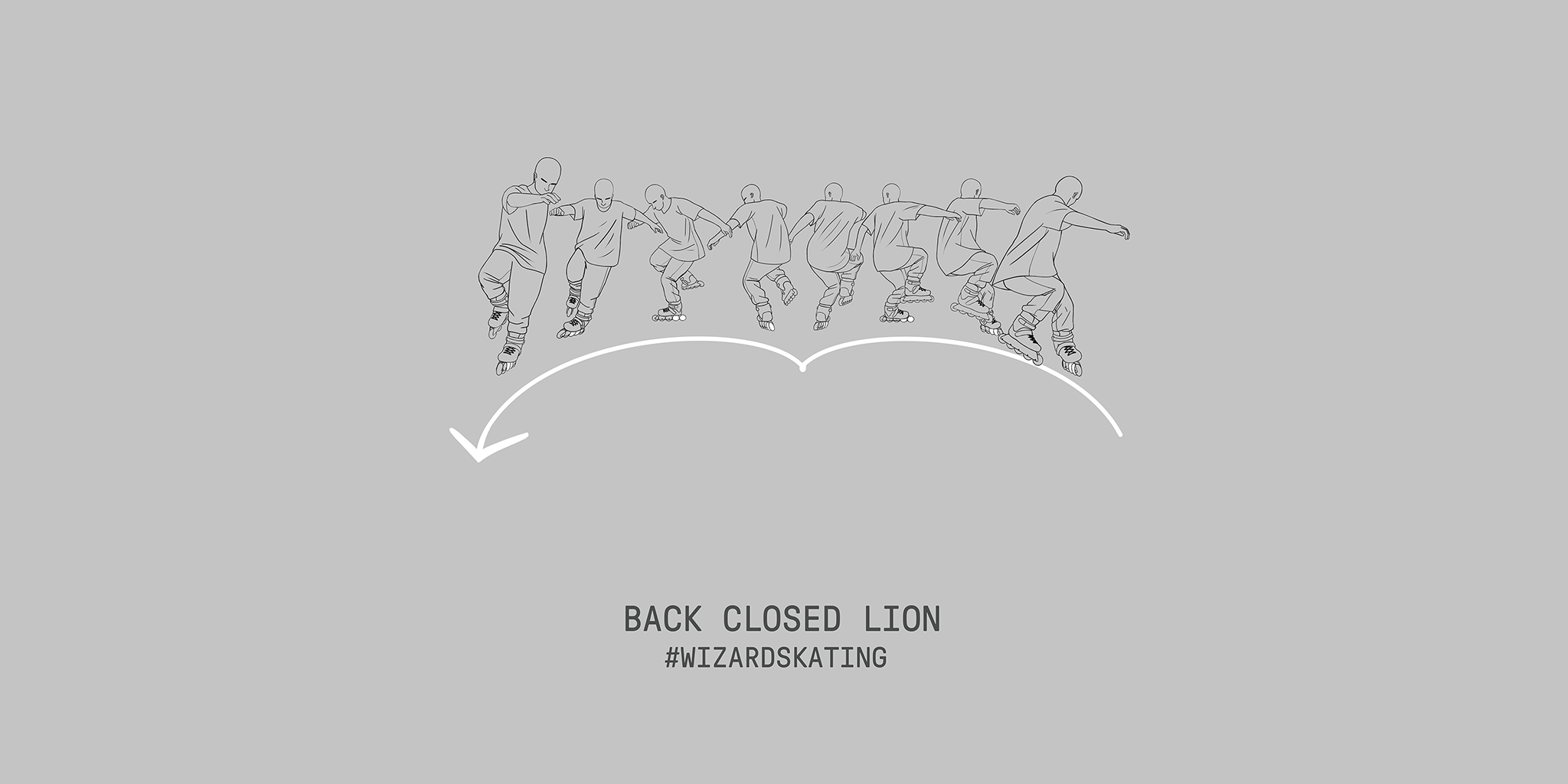Skate Moves
The creation of Wizard frames in 2014 sparked a newfound interest towards the movement possibilities on in-line skates with longer rockered frames (Wizard-style skating).
The earliest documentation and development of these movements can be found in the Skate Moves series of edits, filmed during 2015-2016 in Vancouver, Canada.
The knowledge gained from filming these edits and practicing these movements has led to further development of the equipment (the PR frames) and the following methodology.
Moves developed by Colin and Leon.
Illustrations by Jeferson Herculano
Stage 1
The Predator is the "ready" position while rolling in a straight line; The foundational stance for all Wizard-style skating moves.
Stage 2
Parallels (turns using two feet) and Trees (turns using one foot) use the same principles as Stage 1 (Predator + Predator One), while carving around an imaginary semi-circle shape.
Stage 3
Gazelles (transitions using both feet) and Lions (transitions using one foot) use the same principles from Stage 1 (Predator) and are formed from a combination of two corresponding turns from Stage 2 (Parallels and Trees).
STAGE 1:
Predator + Predator One
The Predator is the "ready" position while rolling in a straight line; The foundational stance for all Wizard-style skating moves.
Click for more
The Predator stance can be performed on one or two feet, rolling forwards or backwards, and on the left or right foot, creating 8 total variations (4 with one foot, and 4 with two feet).
The weight distribution principles (wheels and legs highlighted in white) optimize glide, and help maintain balance while rolling.
The weight is always positioned opposite to the direction of movement (towards the back of the skate when rolling forwards, or towards the front of the skate when rolling backwards).
In all 8 variations, one of the feet will be supporting, and the other will be guiding.
Supporting foot:
While on two feet: Supports most of the body weight
While on one foot: Supports all of the body weight
Guiding foot:
While on two feet: The leading foot, positioned ahead of the body in the direction of movement
While on one foot: The leg which is lifted from the ground.
Position: Skates and knees are shoulder-width apart, wheels on center edge (no edge), legs staggered (one ahead of the other), knees and ankles bent, straight-back posture, looking in the direction of the movement.
Tip: For increased stability at higher speeds or on rougher surfaces, bend the knees more.
Predators (on two feet):
Predator Ones (on one foot):
Stage 2:
Parallel + Tree
Parallels (turns using two feet) and Trees (turns using one foot) use the same principles as Stage 1 (Predator + Predator One), while carving around an imaginary semi-circle shape.
Click for more
The weight distribution between the supporting and guiding foot during the turn will depend on the sharpness of the turn... Sharper turn will require the guiding foot to be more engaged and share the weight distribution duties more evenly with the supporting foot (while still maintaining most of the body weight over the supporting foot).
These turns can be performed in an open* or closed** position, while rolling forwards or backwards, turning left or right, creating 16 variations (8 Parallels and 8 Trees).
*Open turn - From Predator position, the knees are moving away from each other when turning. (For example from a Front Predator with left foot guiding, turning to the left).
**Closed turn - From the same Front Predator position (with left foot guiding), the knees are moving towards each other (but not crossing over) when turning to the right. (A crossover will be an example of an extended closed position).
Position: Skates and knees are shoulder-width apart, wheels on corresponding edges (when turning on two feet) or on one edge (inside or outside) when turning on one foot, legs scissored (one ahead of the other), knees bent, straight-back posture, eyes towards the centre of the circle (when rolling forwards) or over the shoulder in the direction of movement (when rolling backwards).
Parallels (turns using two feet):
Trees (turns using one foot):
Stage 3:
Gazelle + Lion
Gazelles (transitions using both feet) and Lions (transitions using one foot) use the same principles from Stage 1 (Predator) and are formed from a combination of two corresponding turns from Stage 2 (Parallels and Trees).
ex: The Back Open Gazelle is a combination of the Back Open Parallel, and Front Open Parallel.
Click for more
These transitions can be performed in an open or closed orientation, while rolling forwards or backwards, turning left or right, creating 16 variations (8 Gazelles and 8 Lions).
Each variation of these transitions follows the same imaginary arc of a semicircle (like stage two) with the addition of the number 3 shape pattern going in and back to the arc in the climax* of the transition.
*Climax - The transition between the centre 2 figures on each drawing.
Changes during Climax:
- Direction change (front to back, or back to front)
- Weight shift (toes to heels, or heels to toes)
- Edge switch (outside to inside, or inside to outside)
Entering the Climax:
- Sharp turn into the arc (slowing down the movement)
- Knees compress (getting low)
- Skates get "sucked in" under the body (feeling "charged" with energy)
Exiting from Climax:
- Skates get "pushed out" from under the body (releasing the "charged" energy)
- Knees spring up (extending from the sitting position)
- Sharp turn back into the arc (accelerating the movement)
Key Principles:
1. Contact - Maintain full contact between the wheels and the ground (not lifting off) throughout the entire transition (especially the climax).
2. Form - Maintain the same orientation (open or closed) throughout the entire arc (before and after the climax).
3. Timing - The climax of the transition requires precise timing of all the physical changes mentioned above.
Tip: For one foot transitions (Lions), the guiding foot (lifted foot) requires more engagement to generate momentum and help the supporting foot initiate the transition (especially for the Back Closed or Open Lions).
Gazelles (transitions using two feet):
Lions (transitions using one foot):
